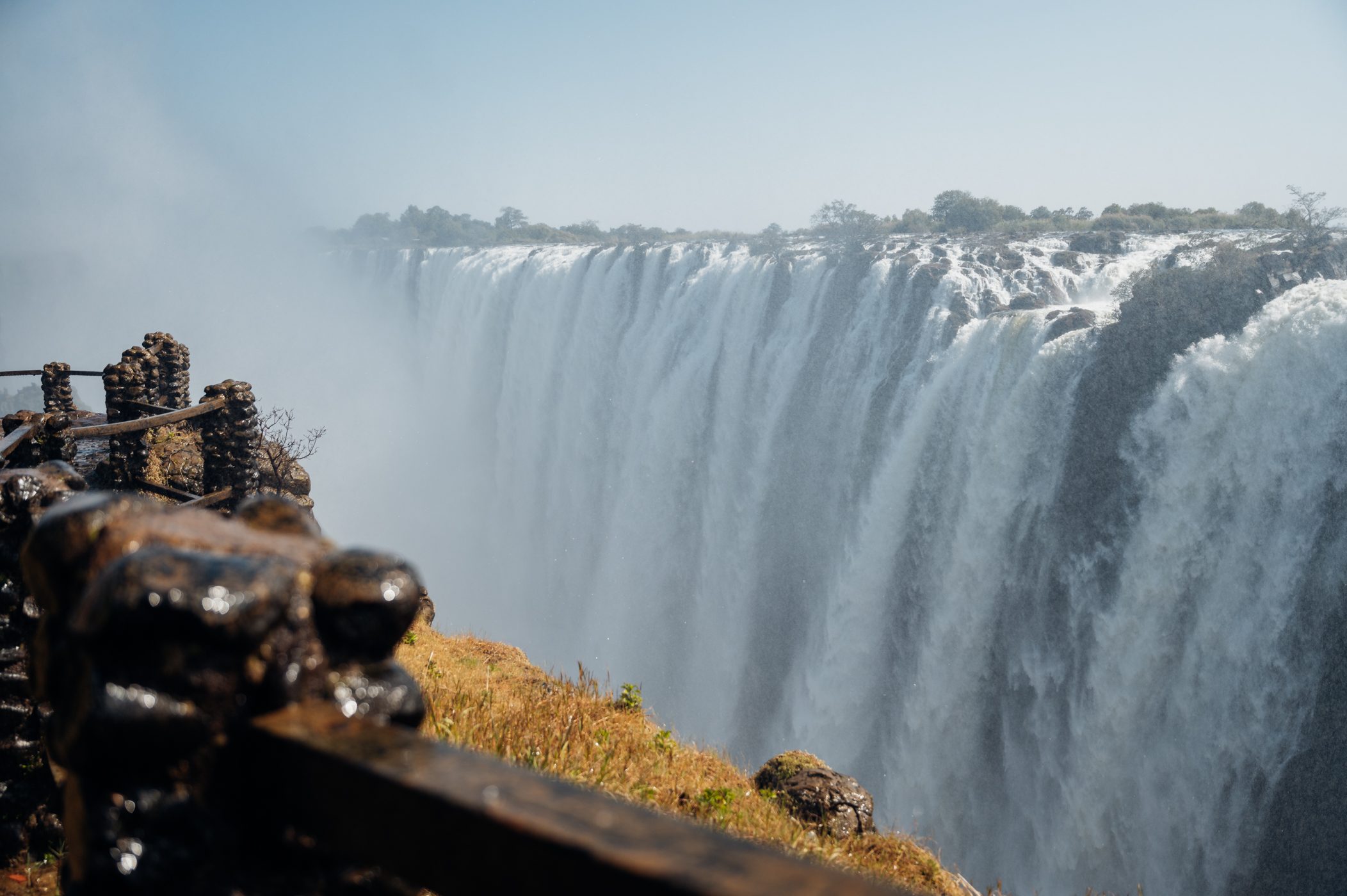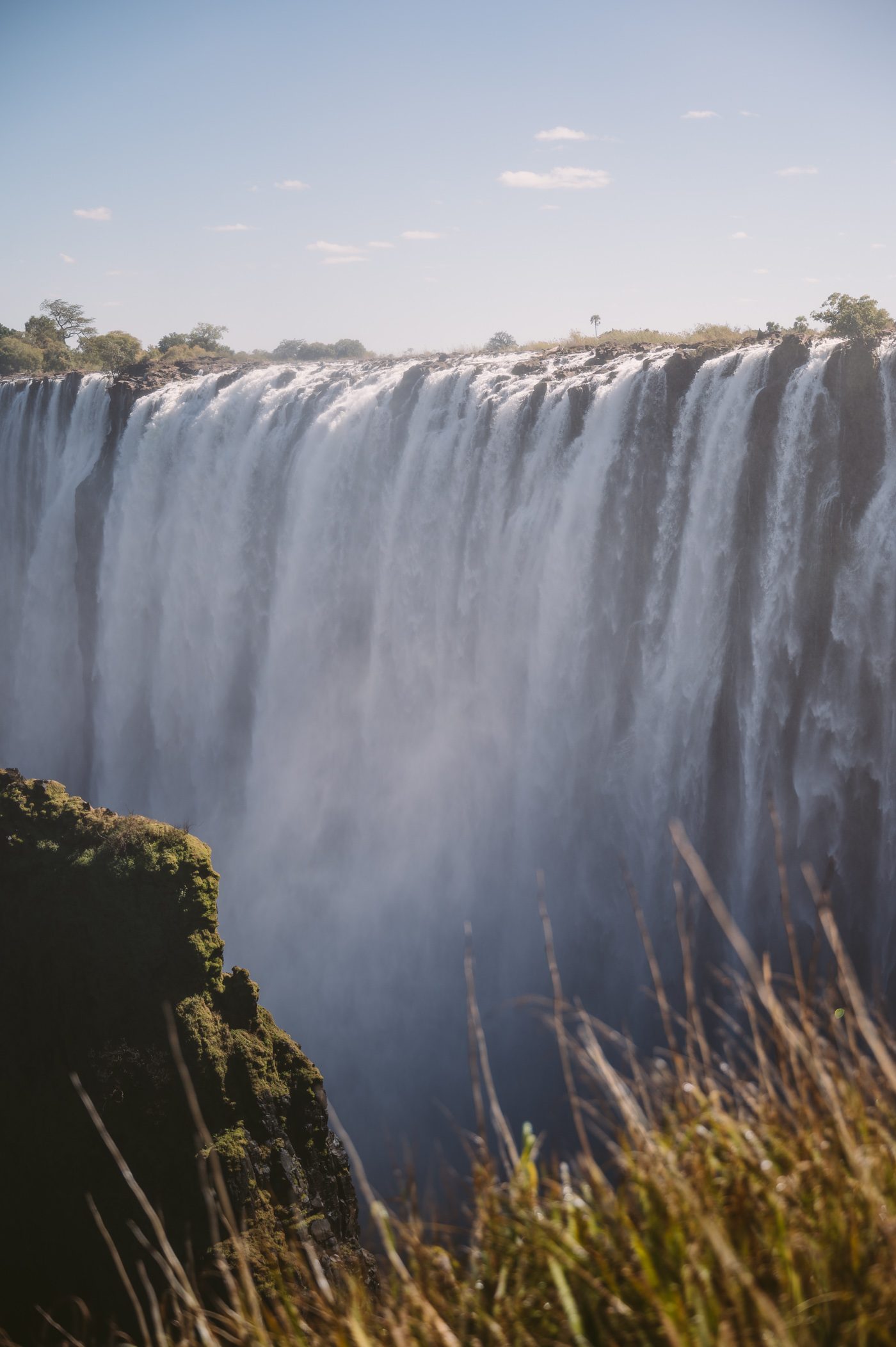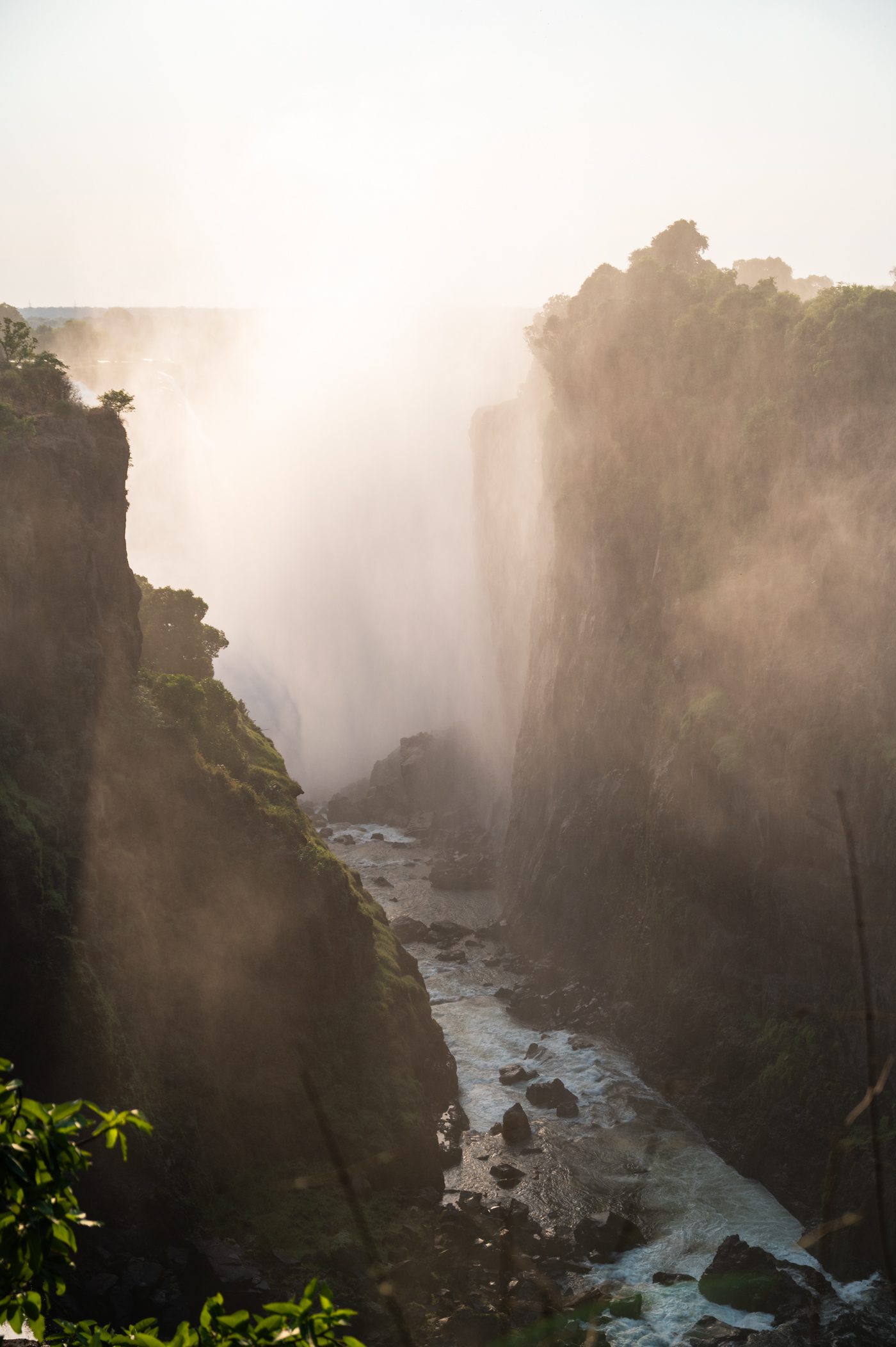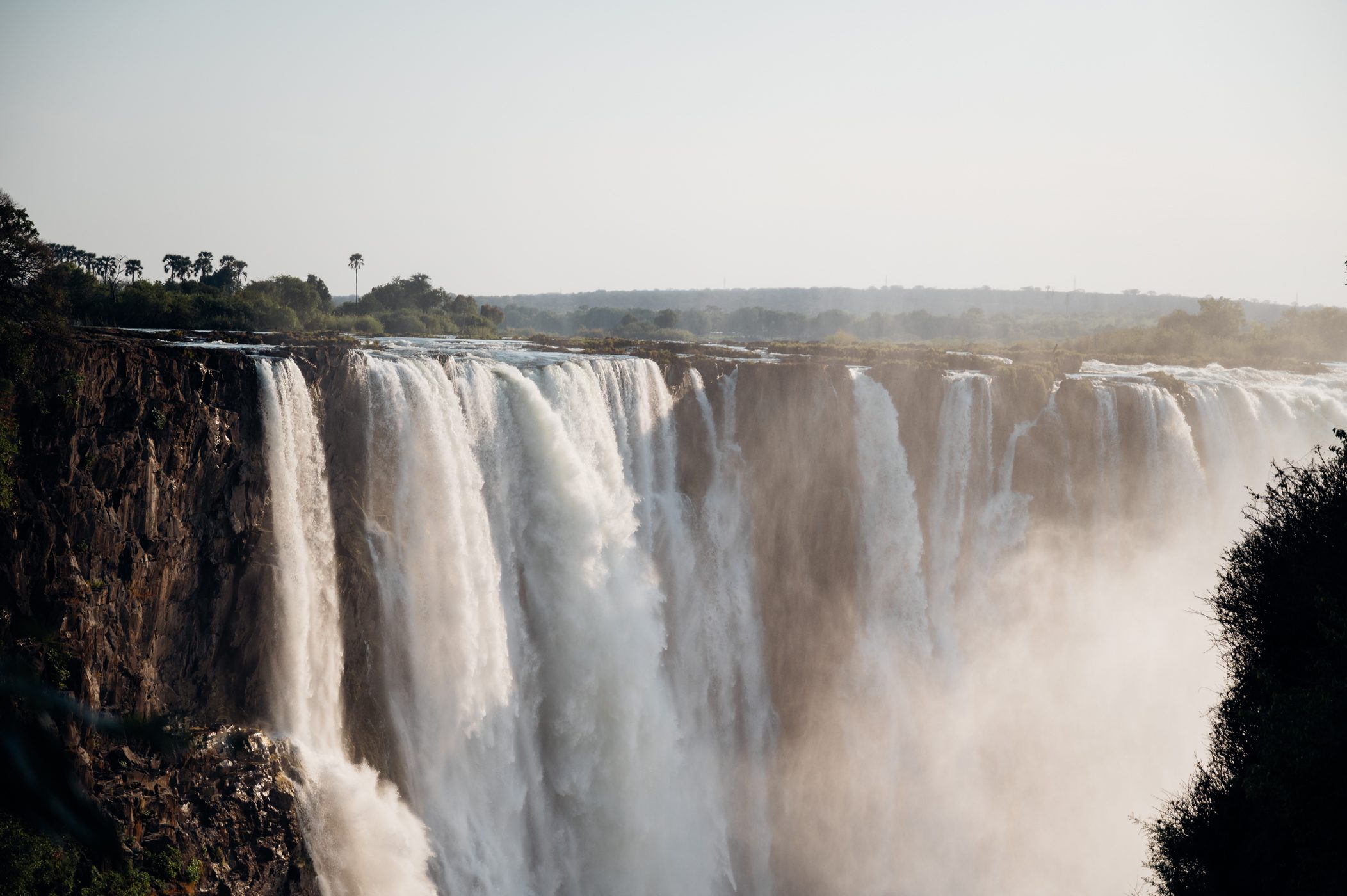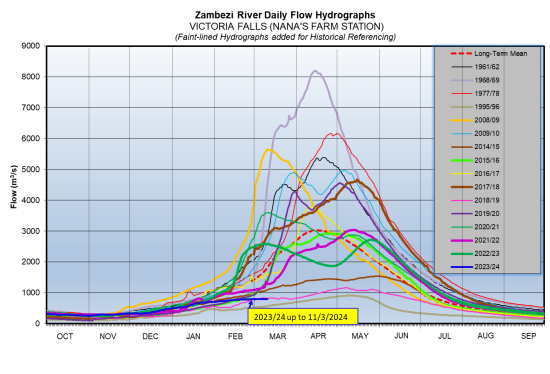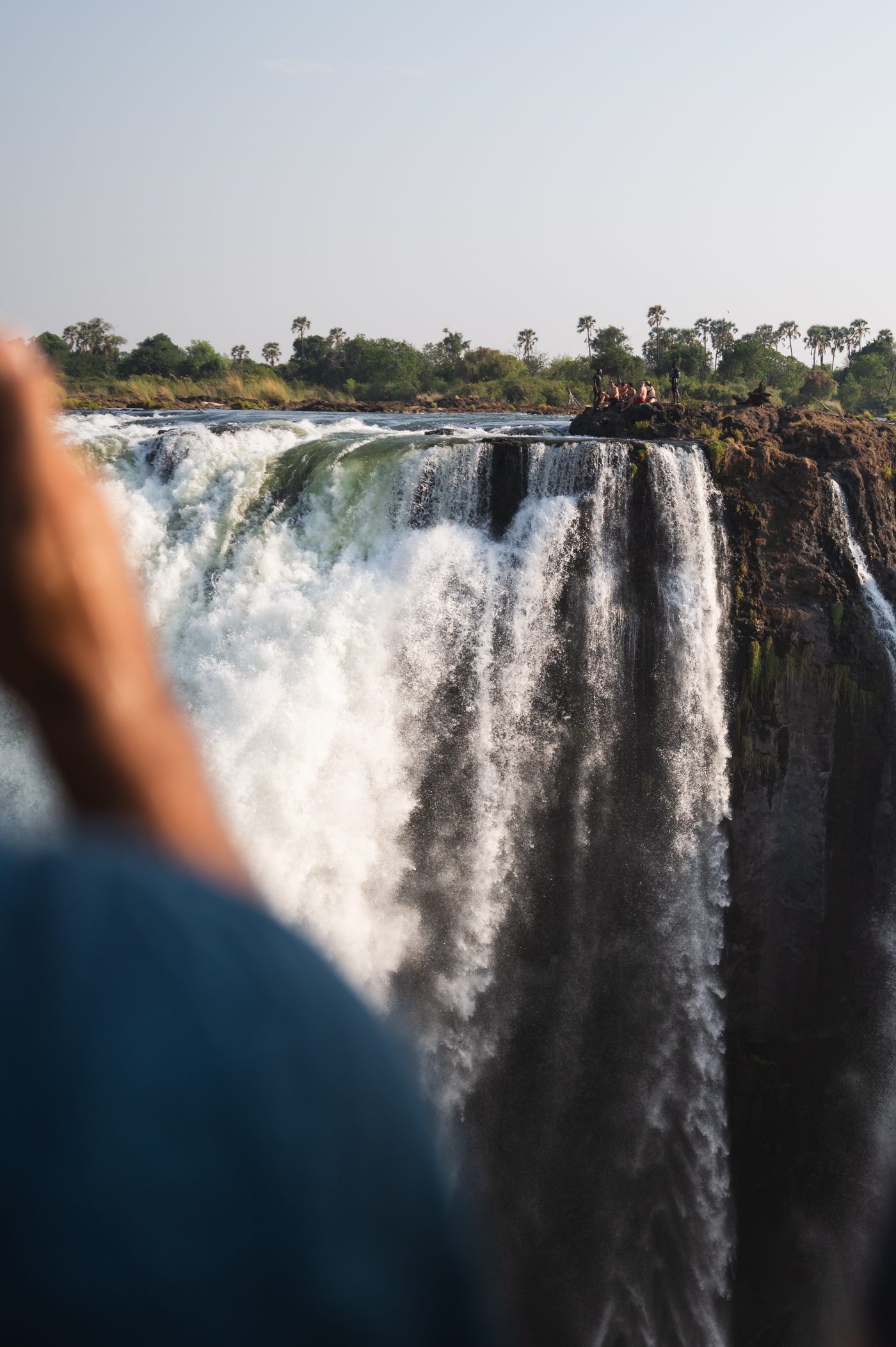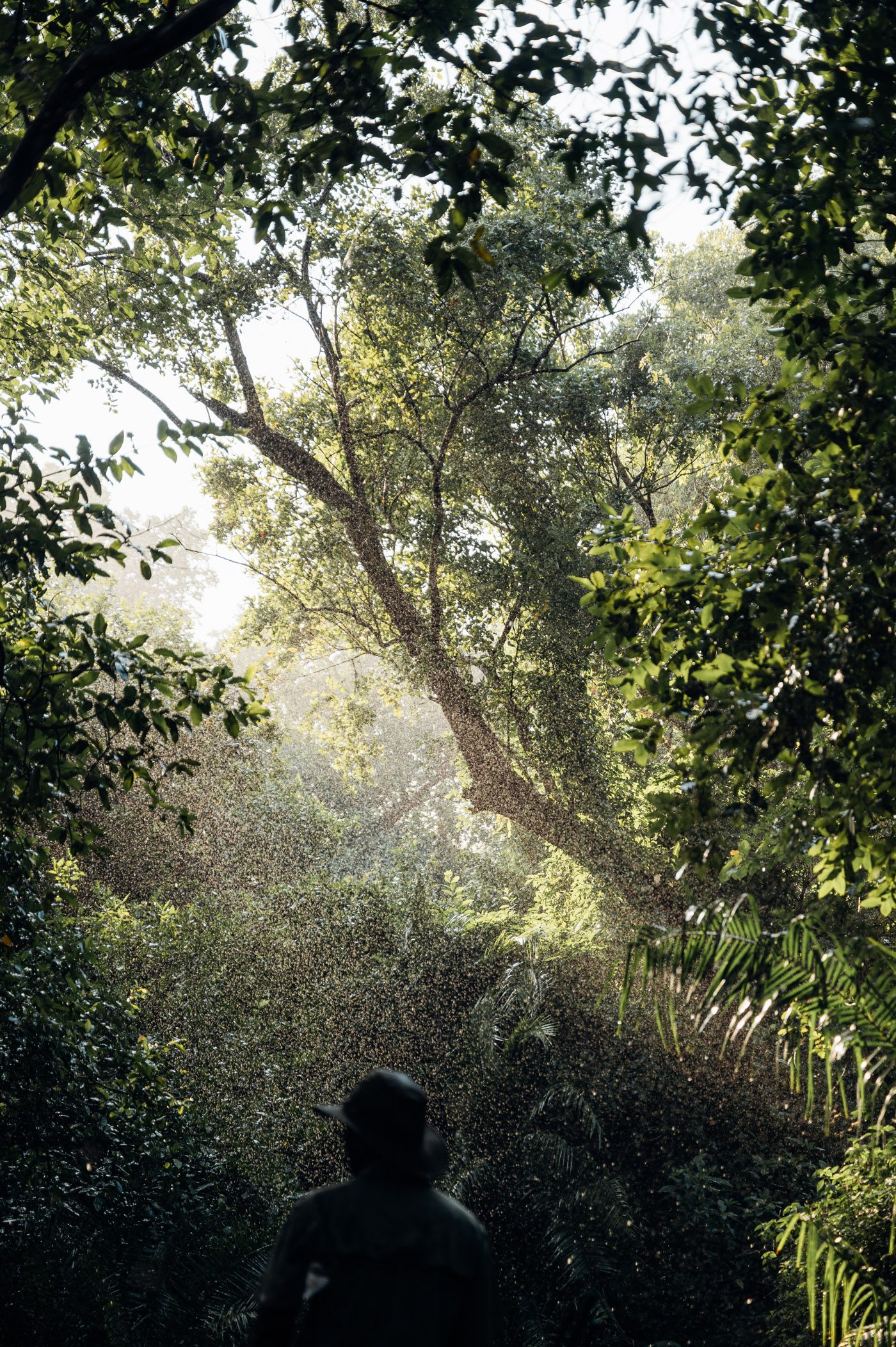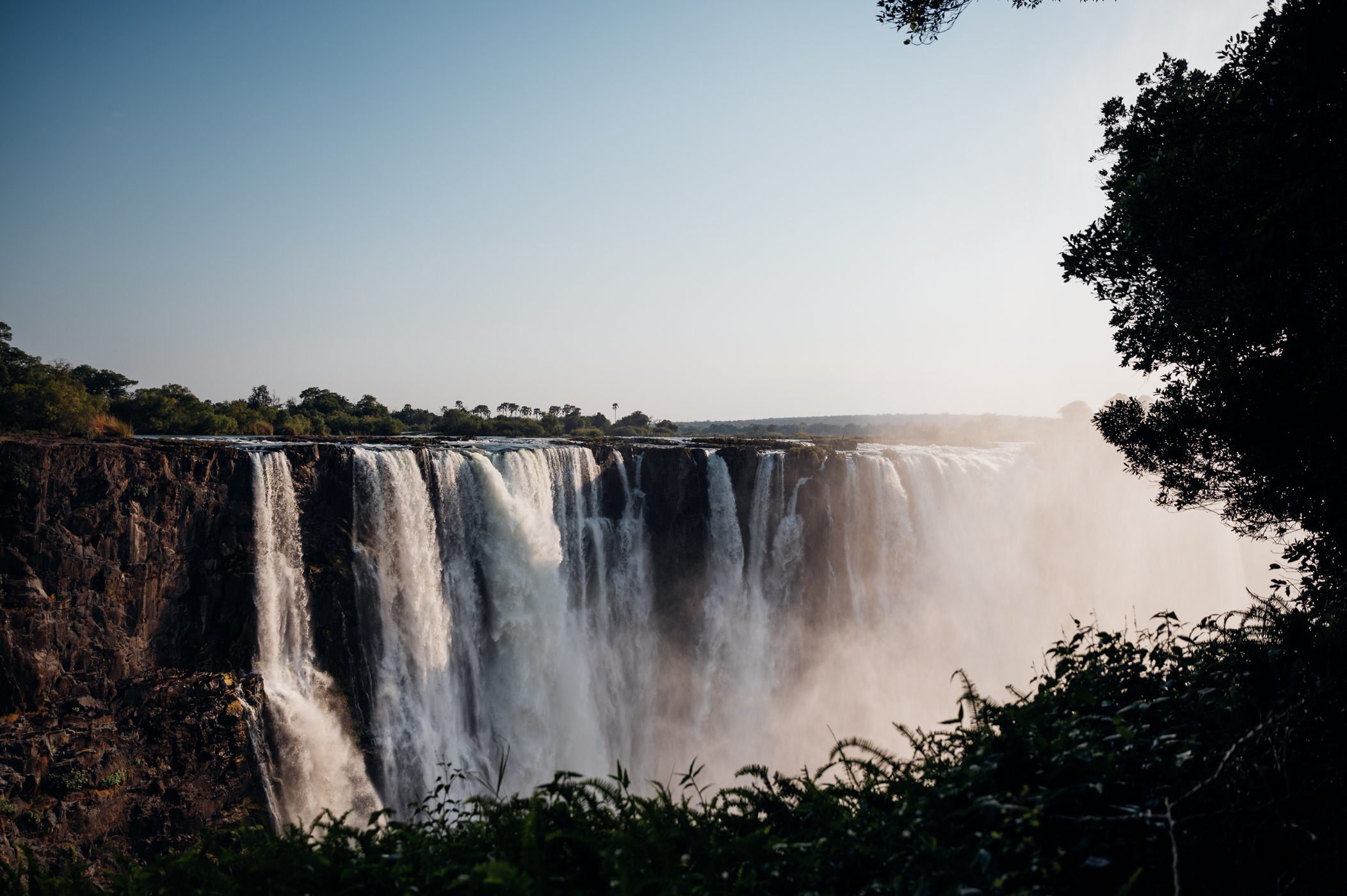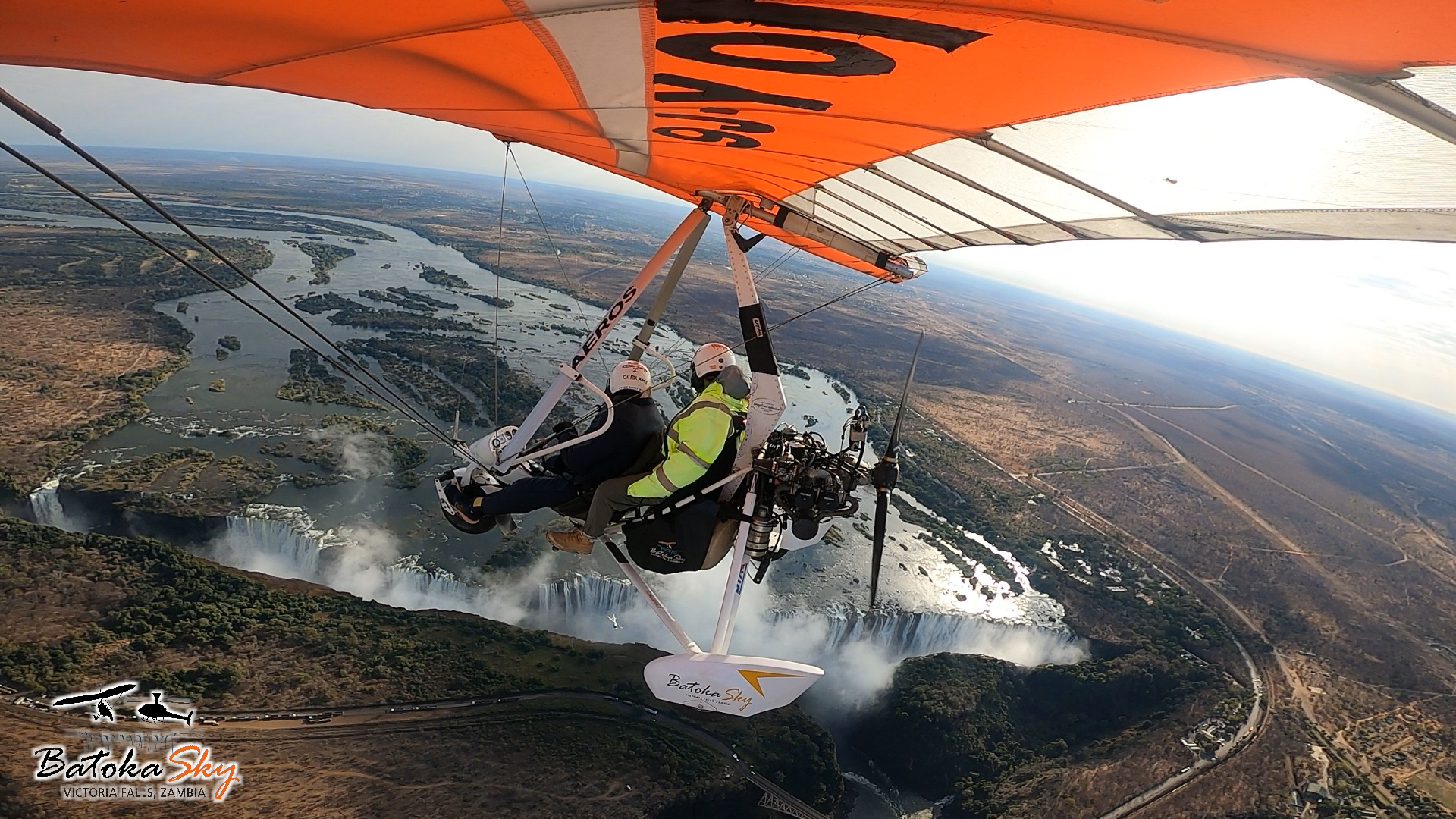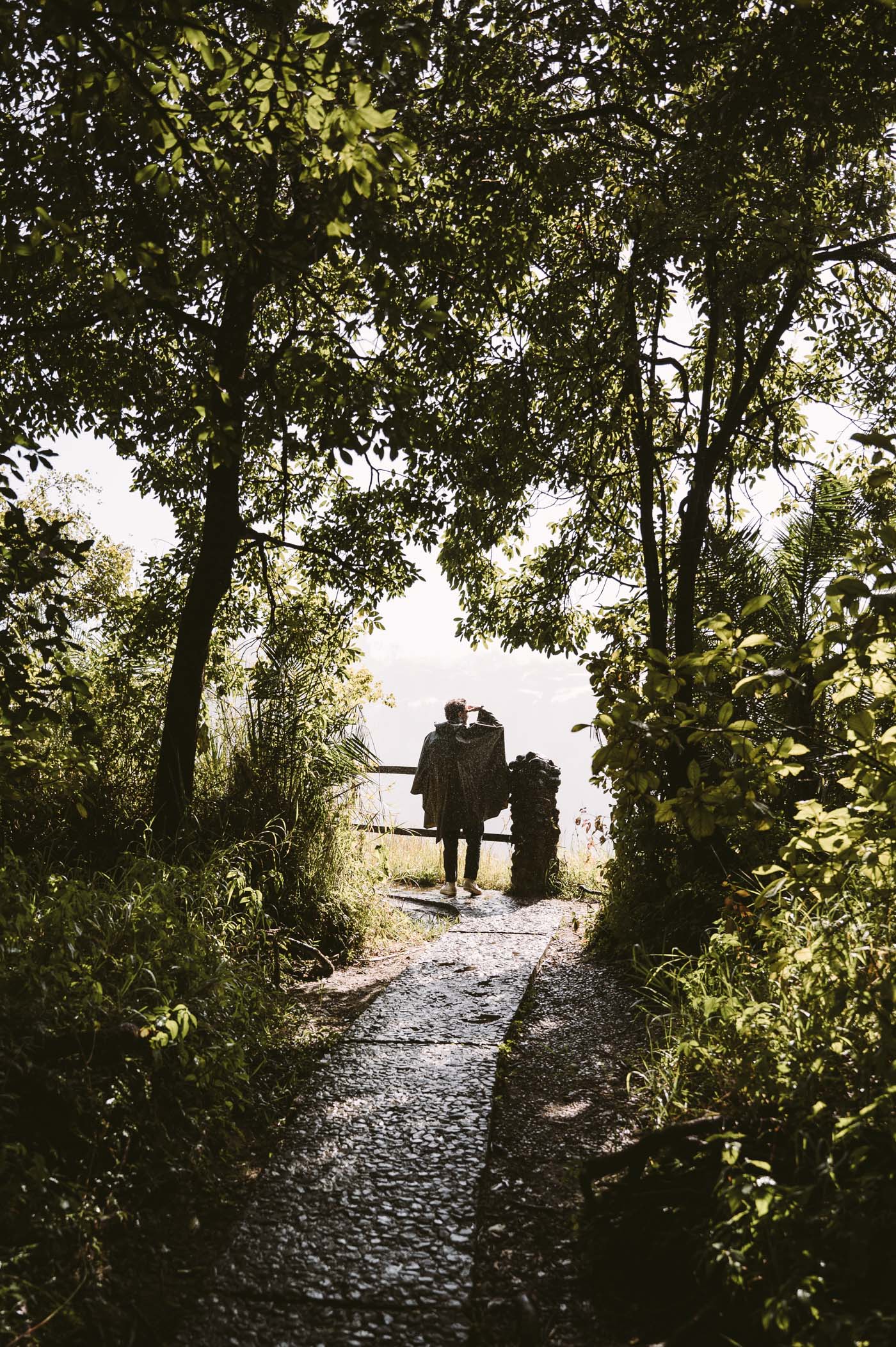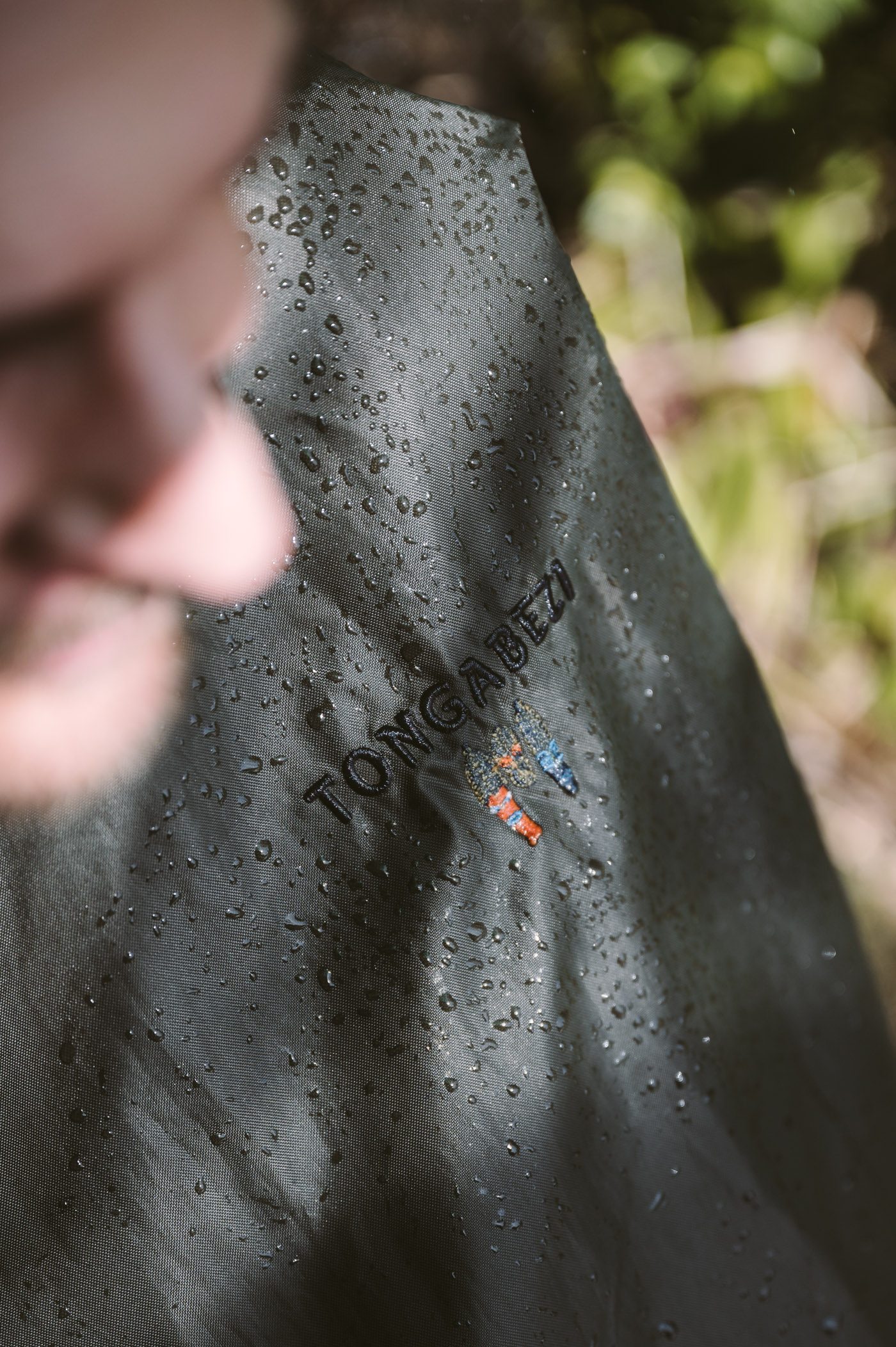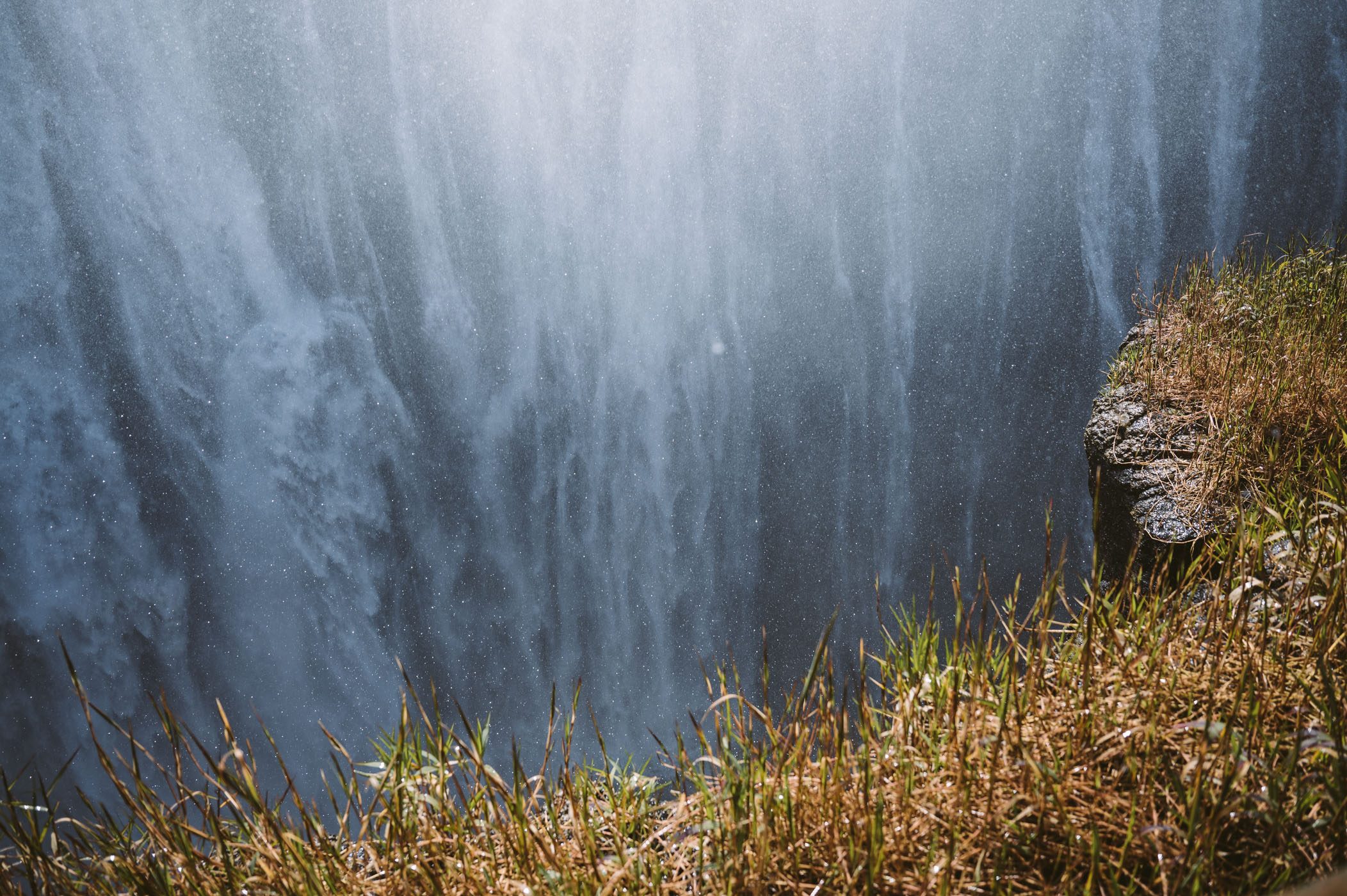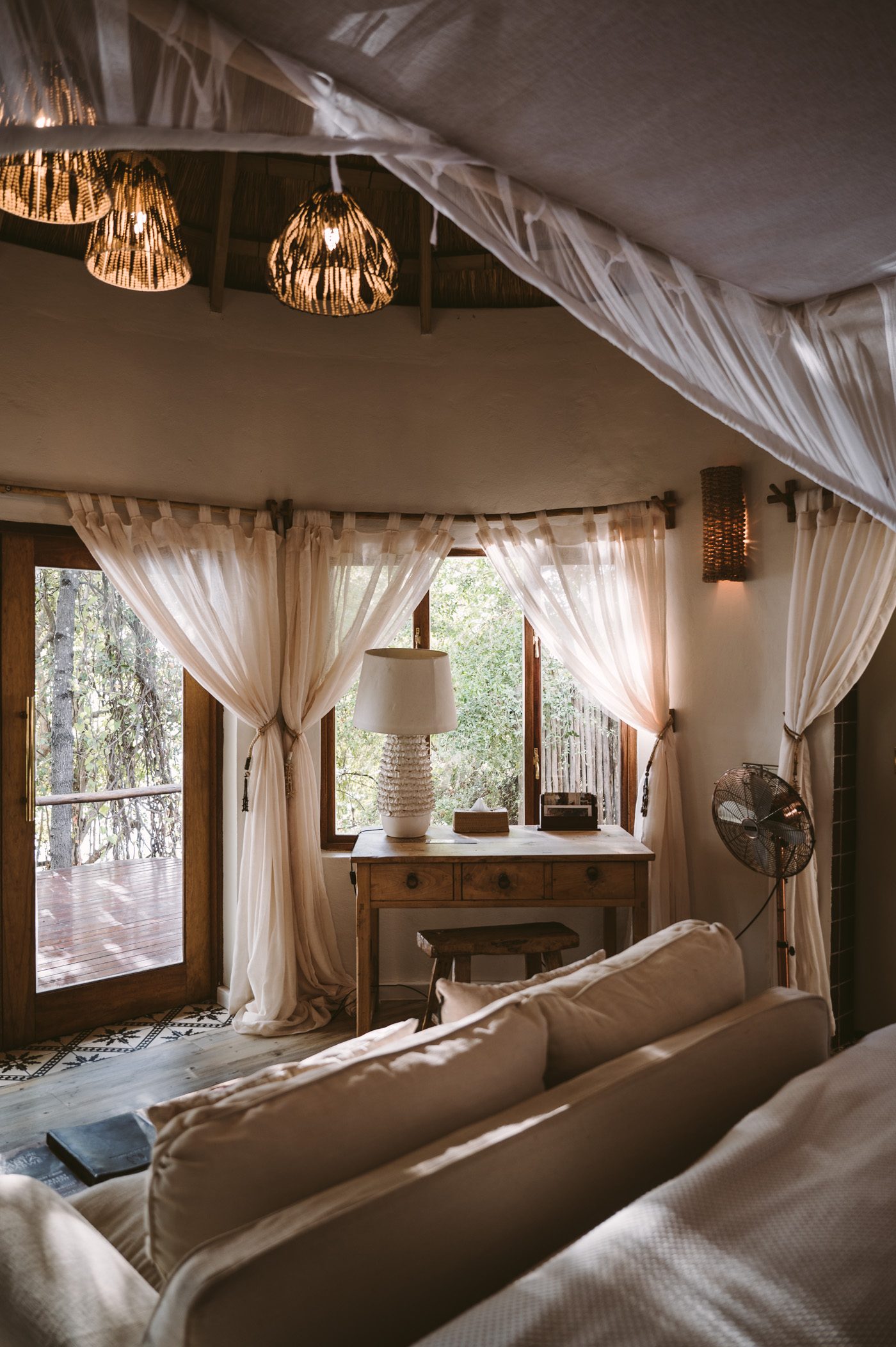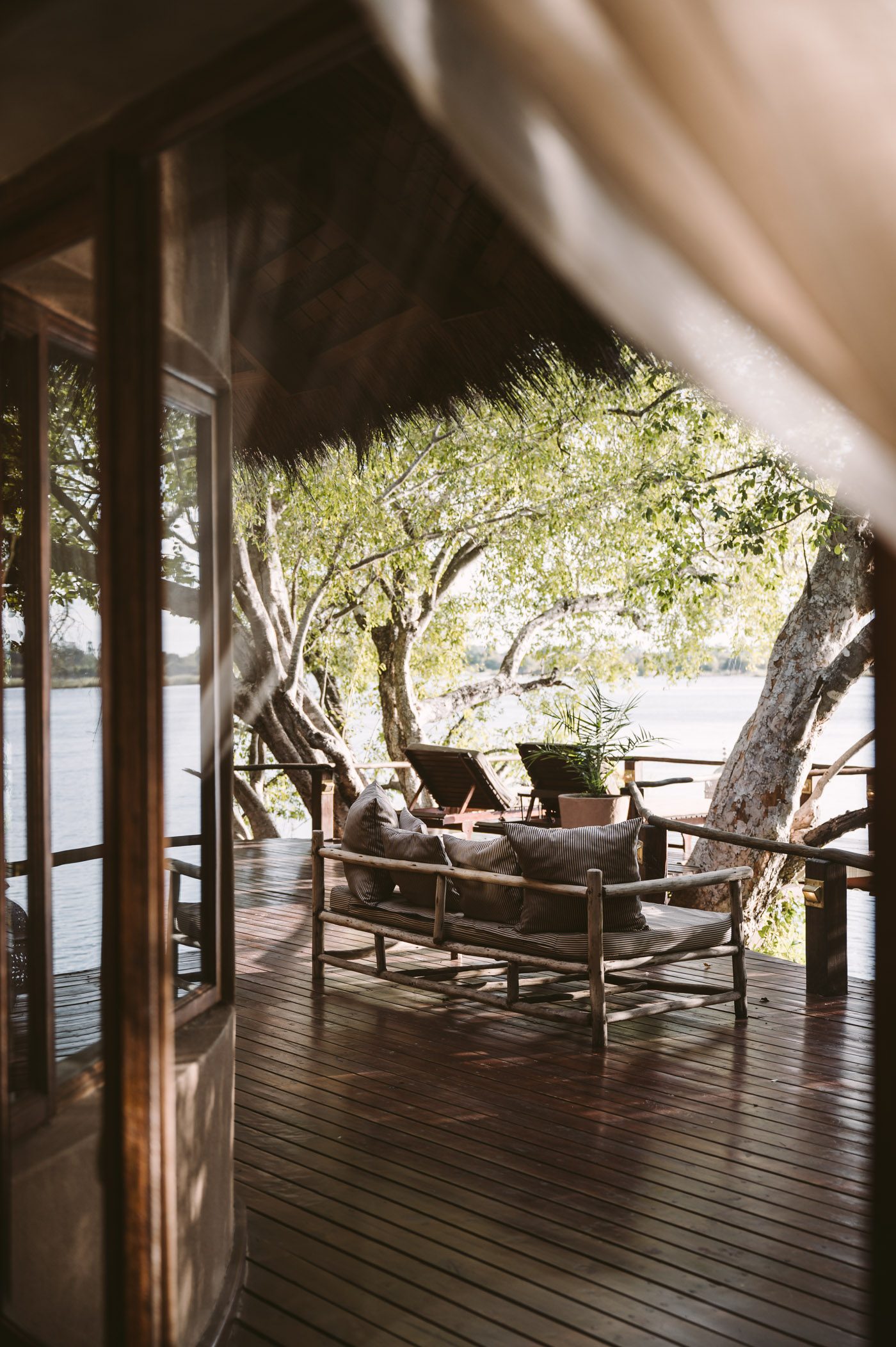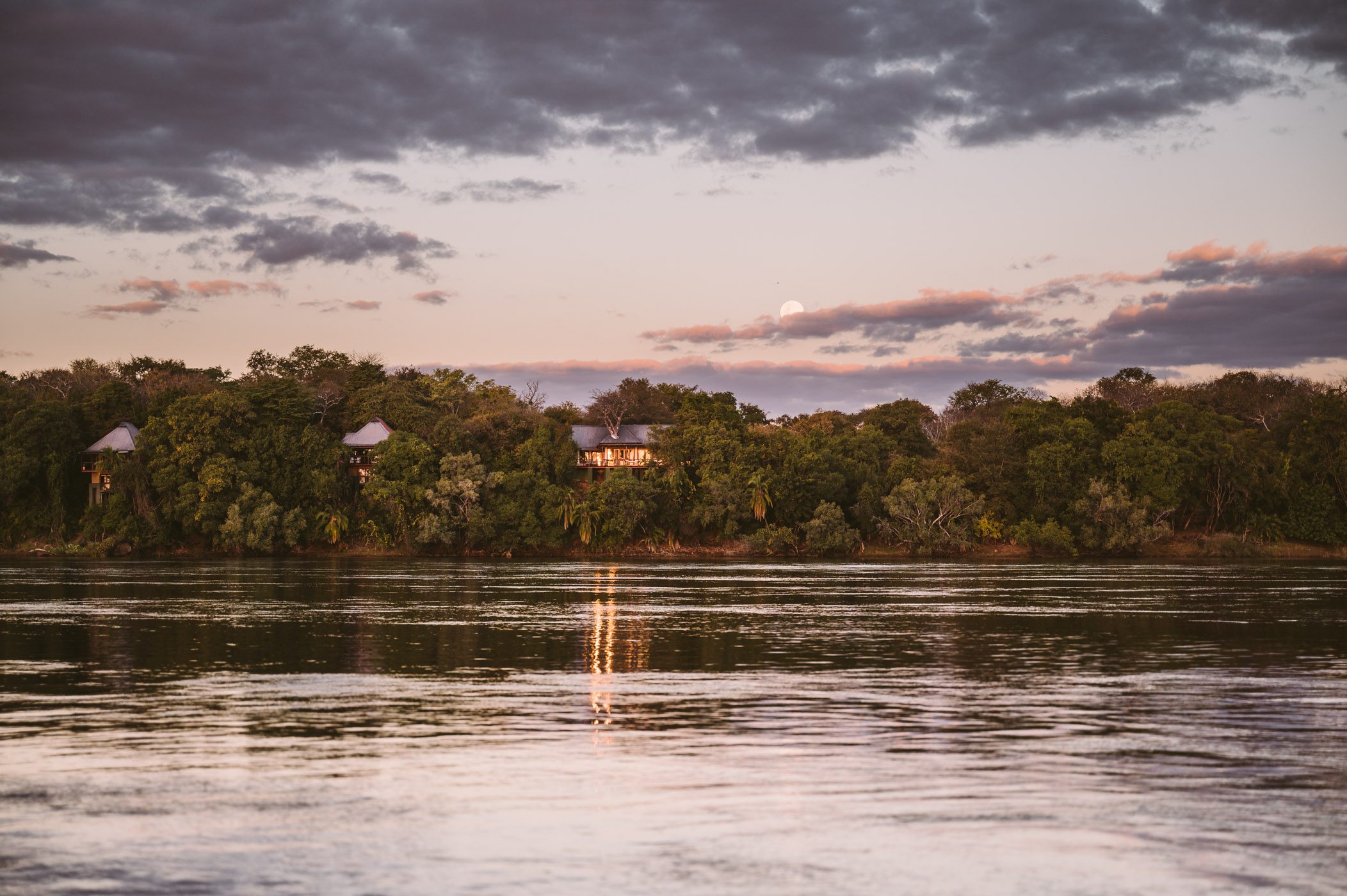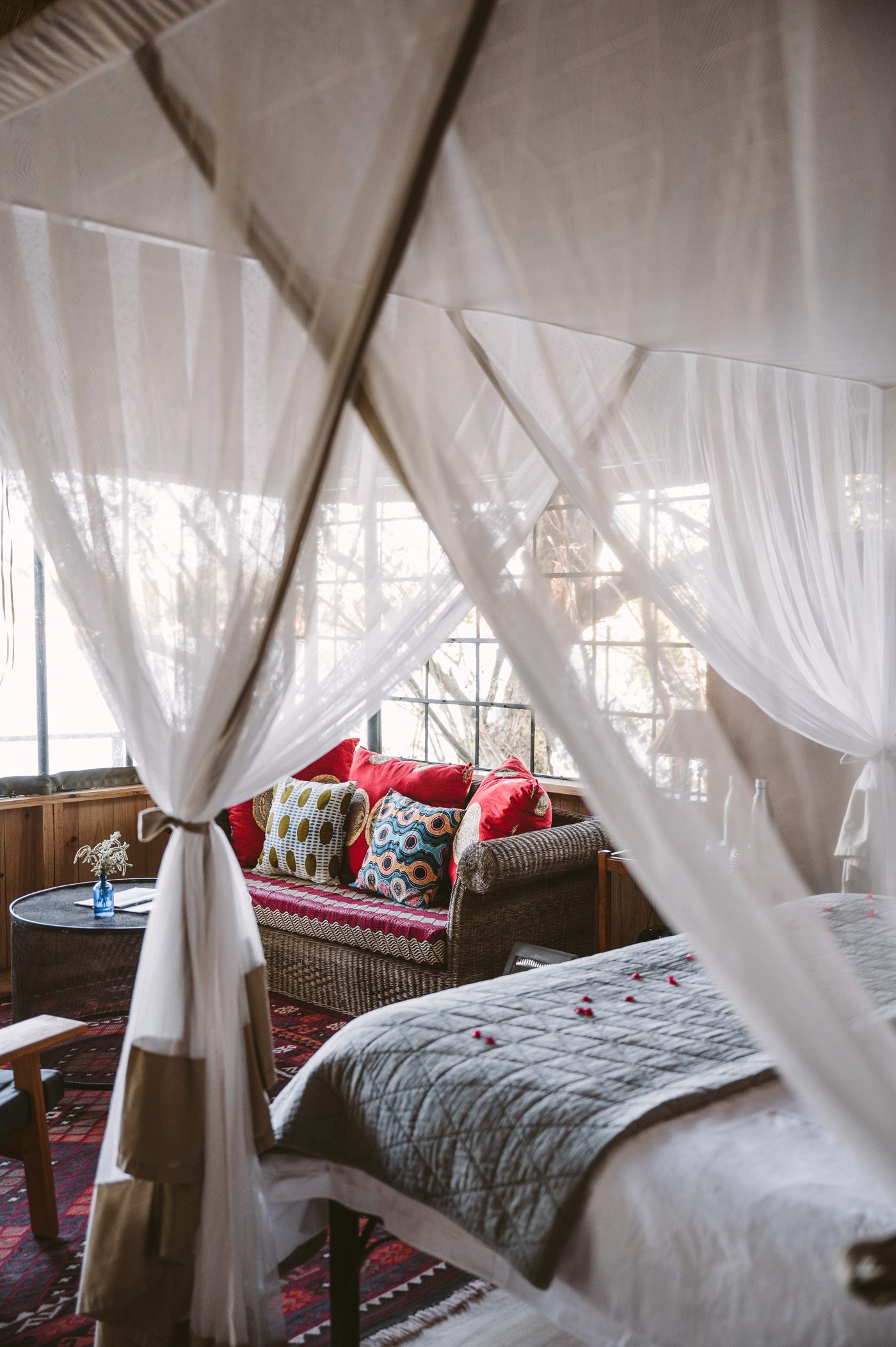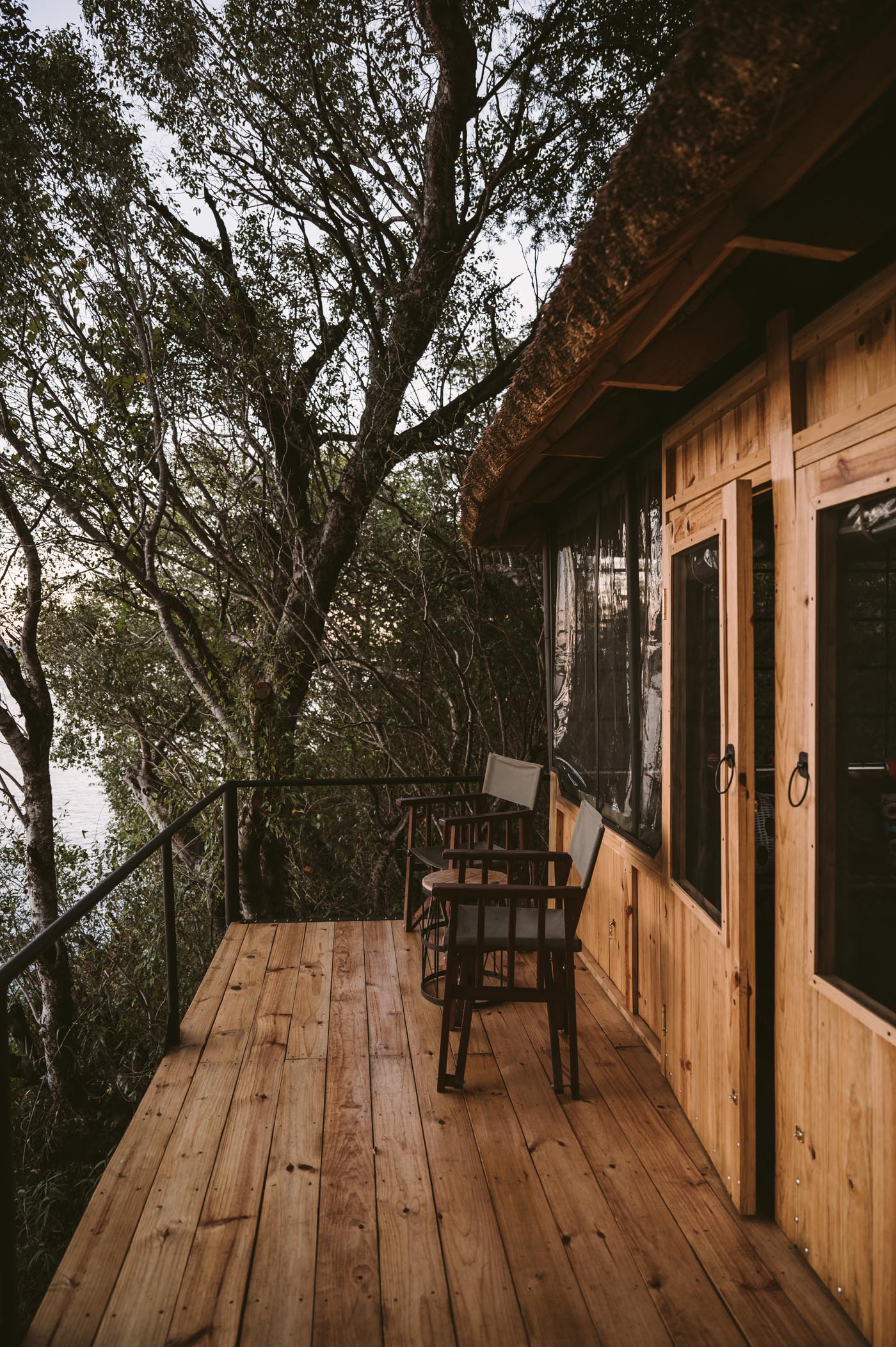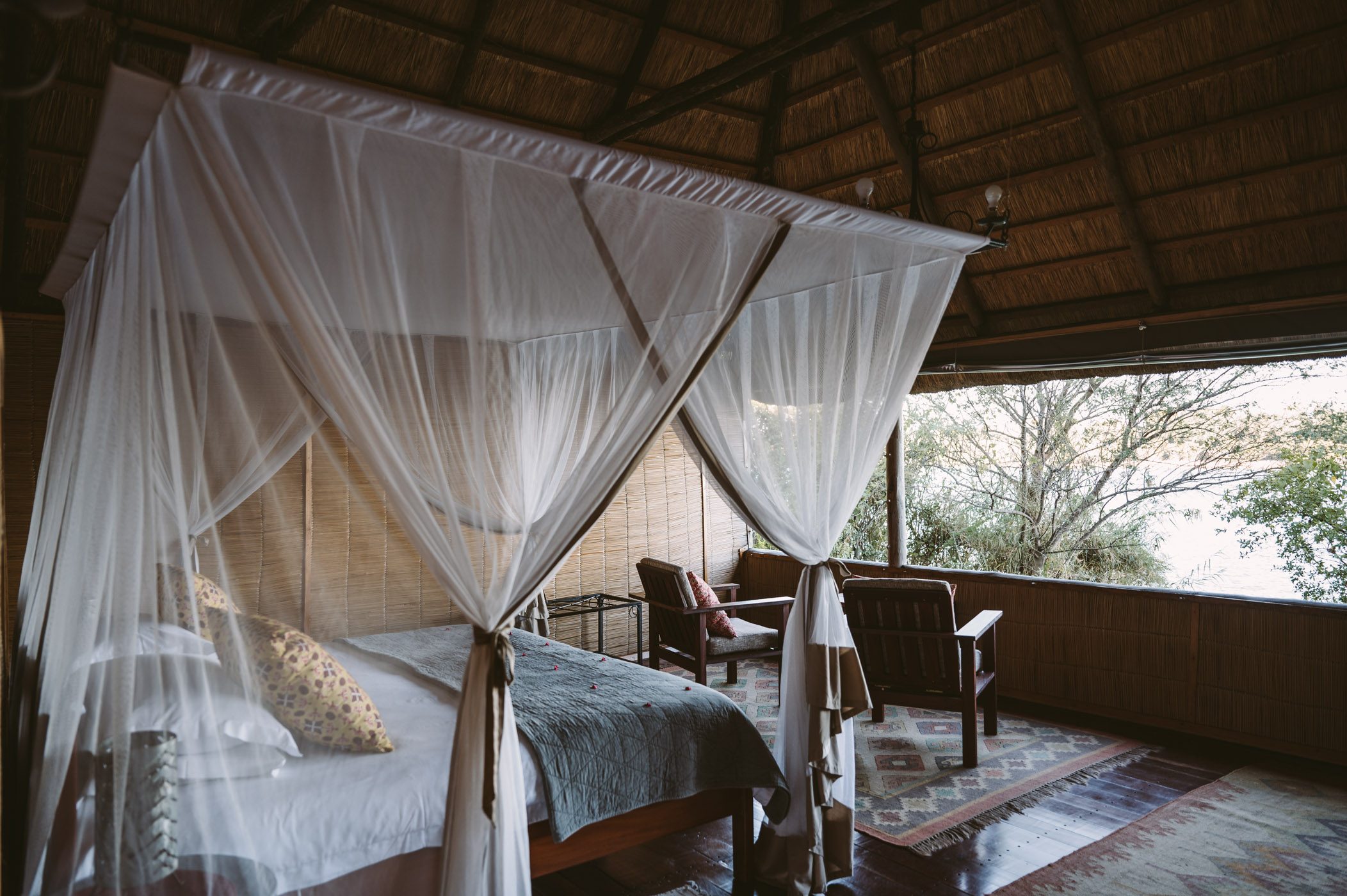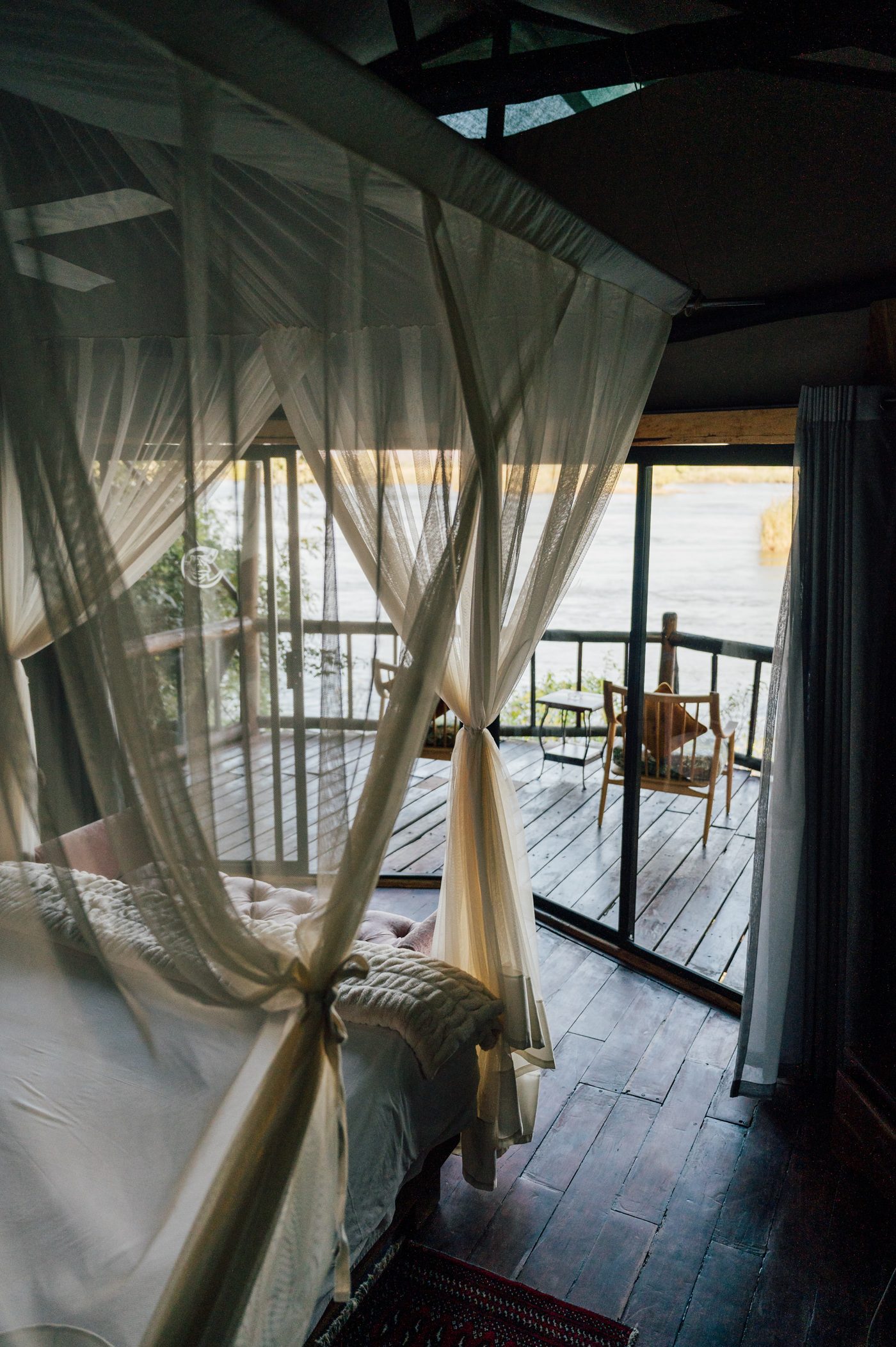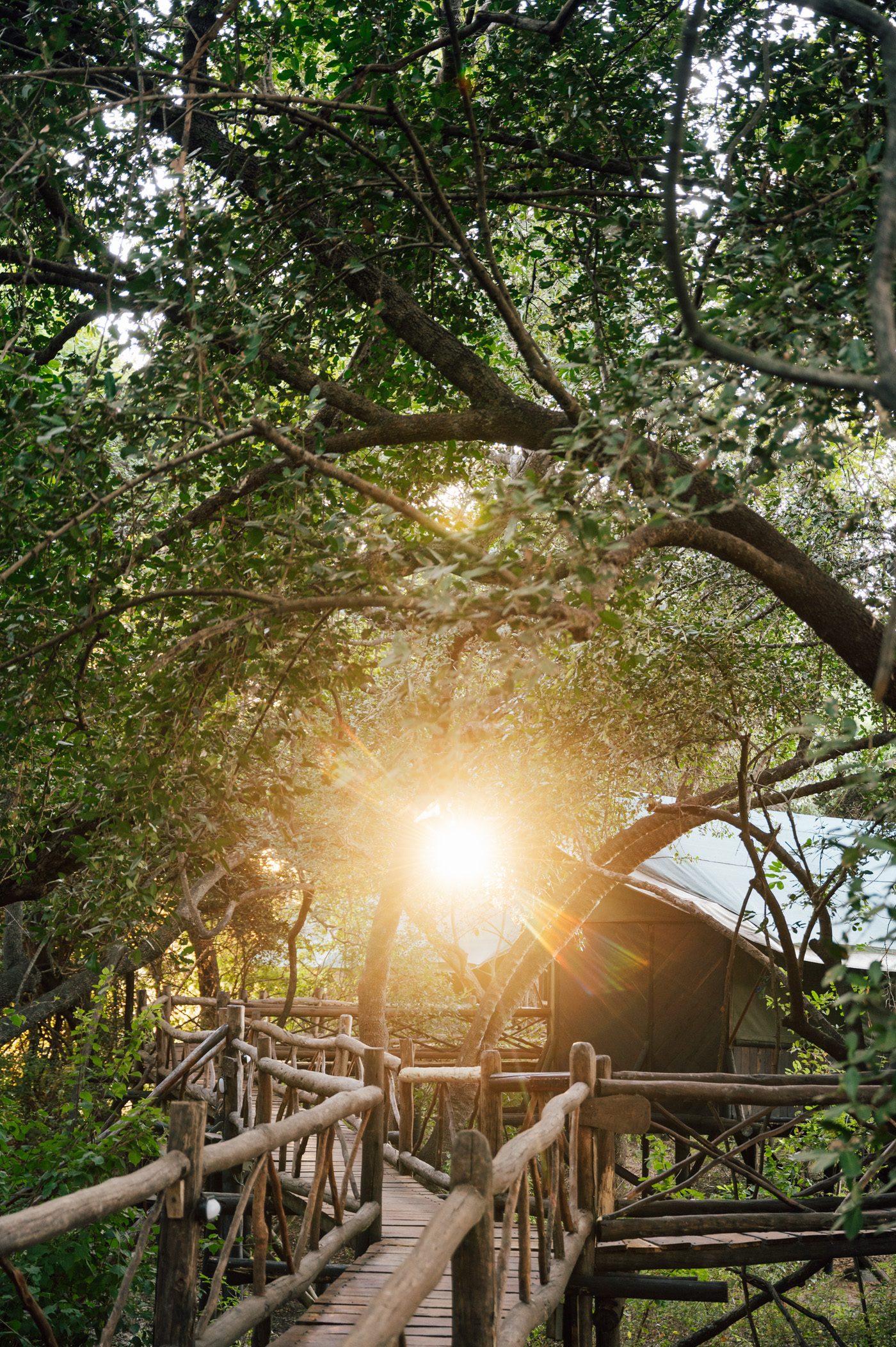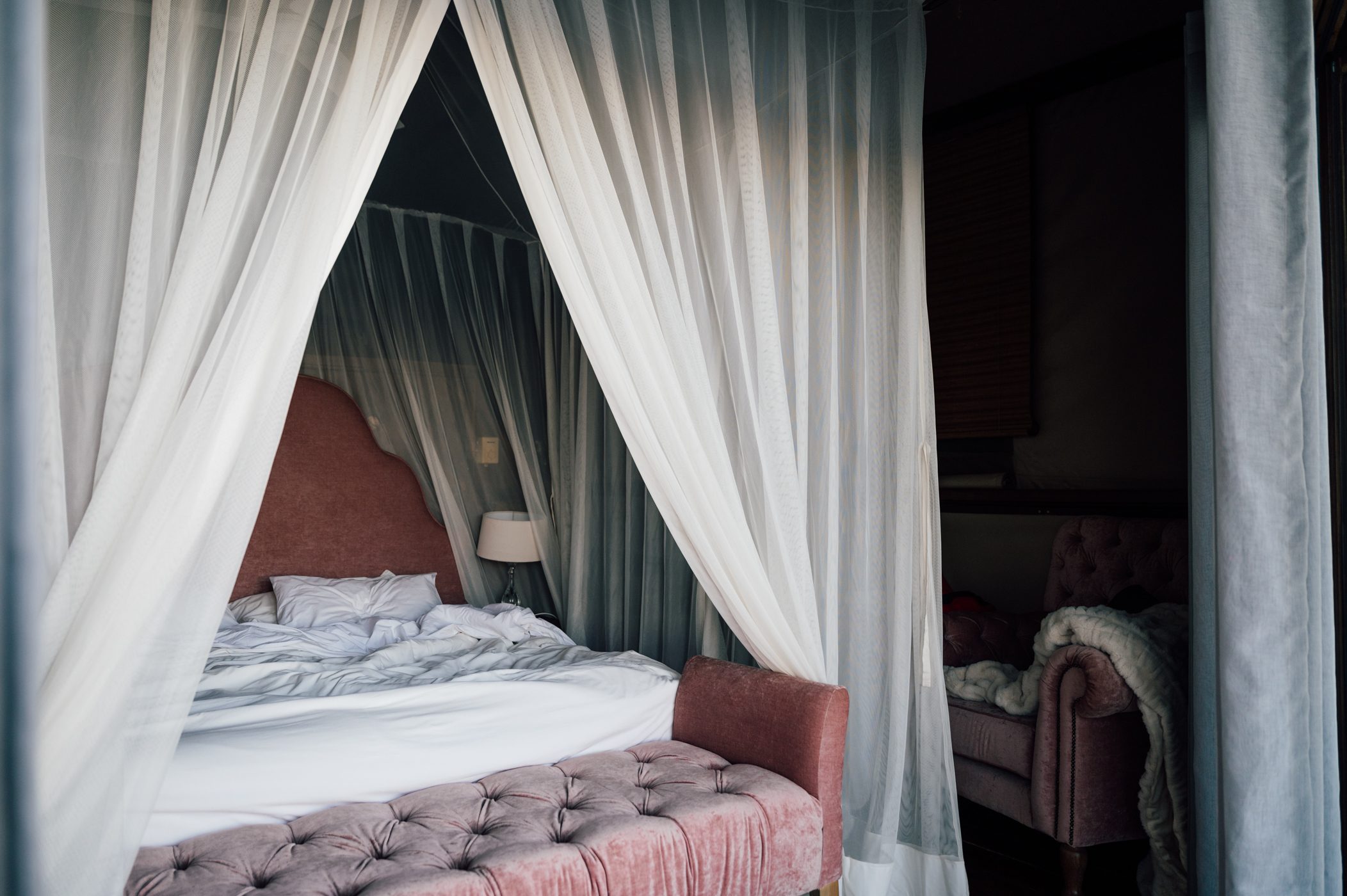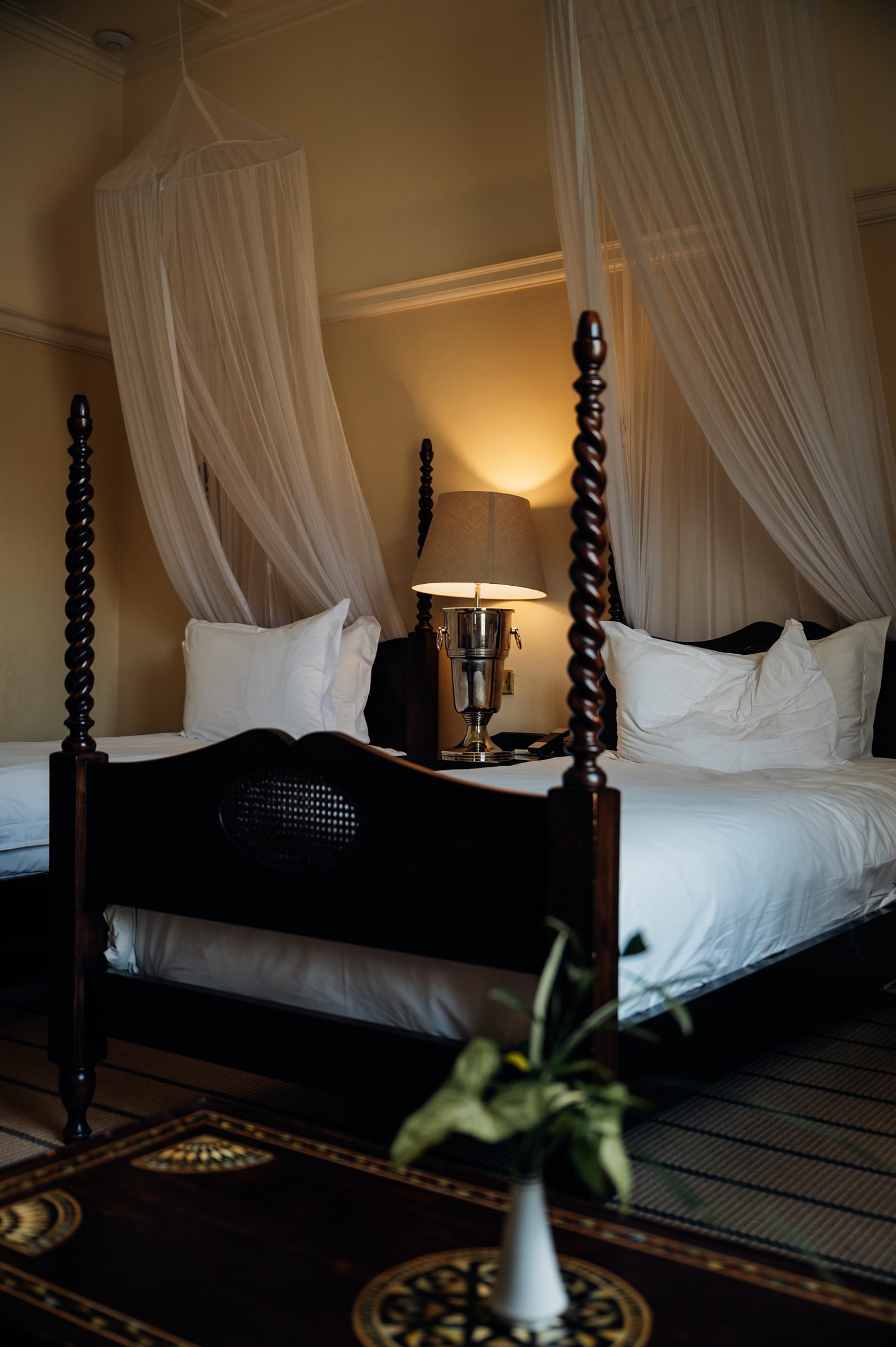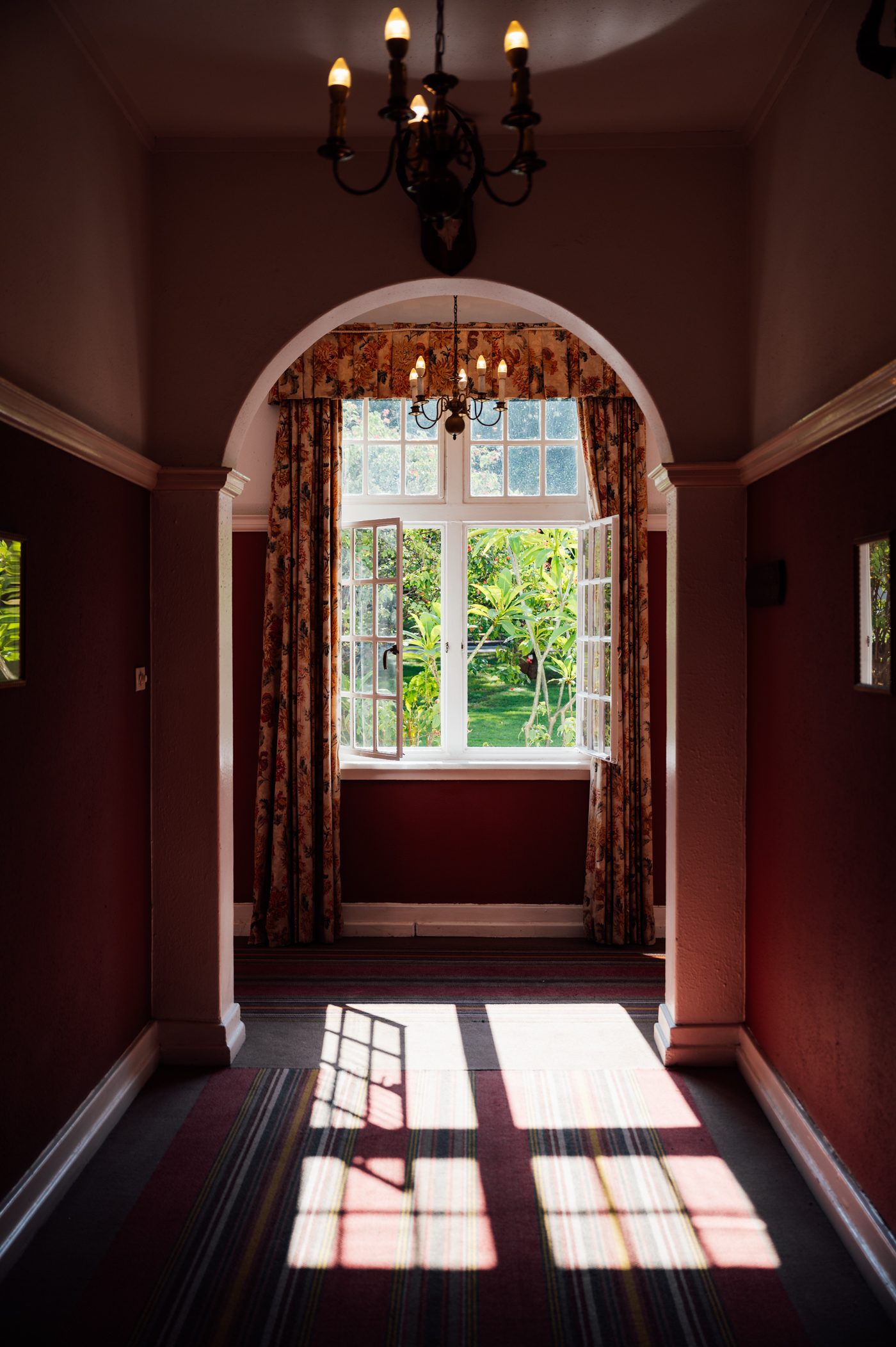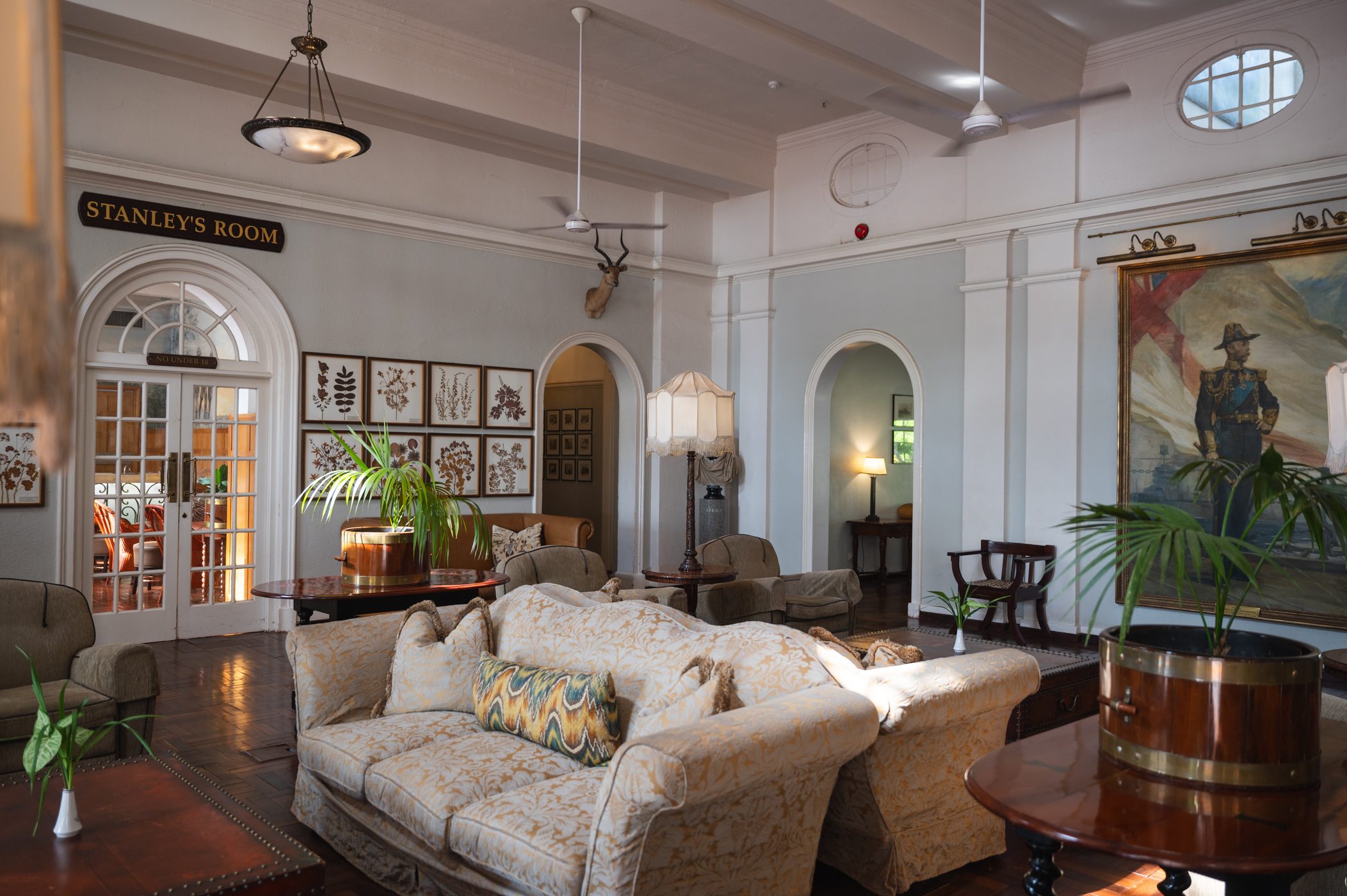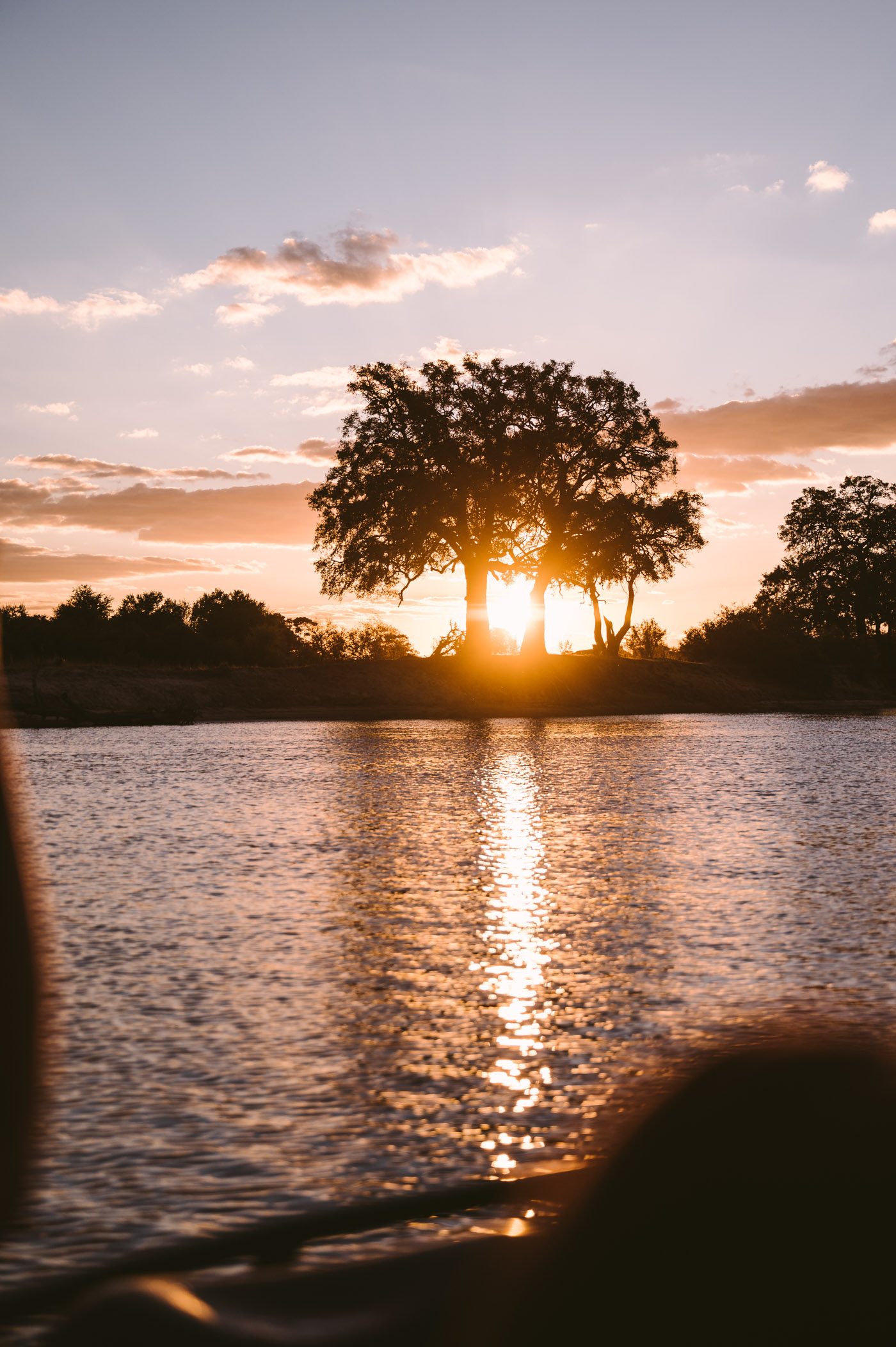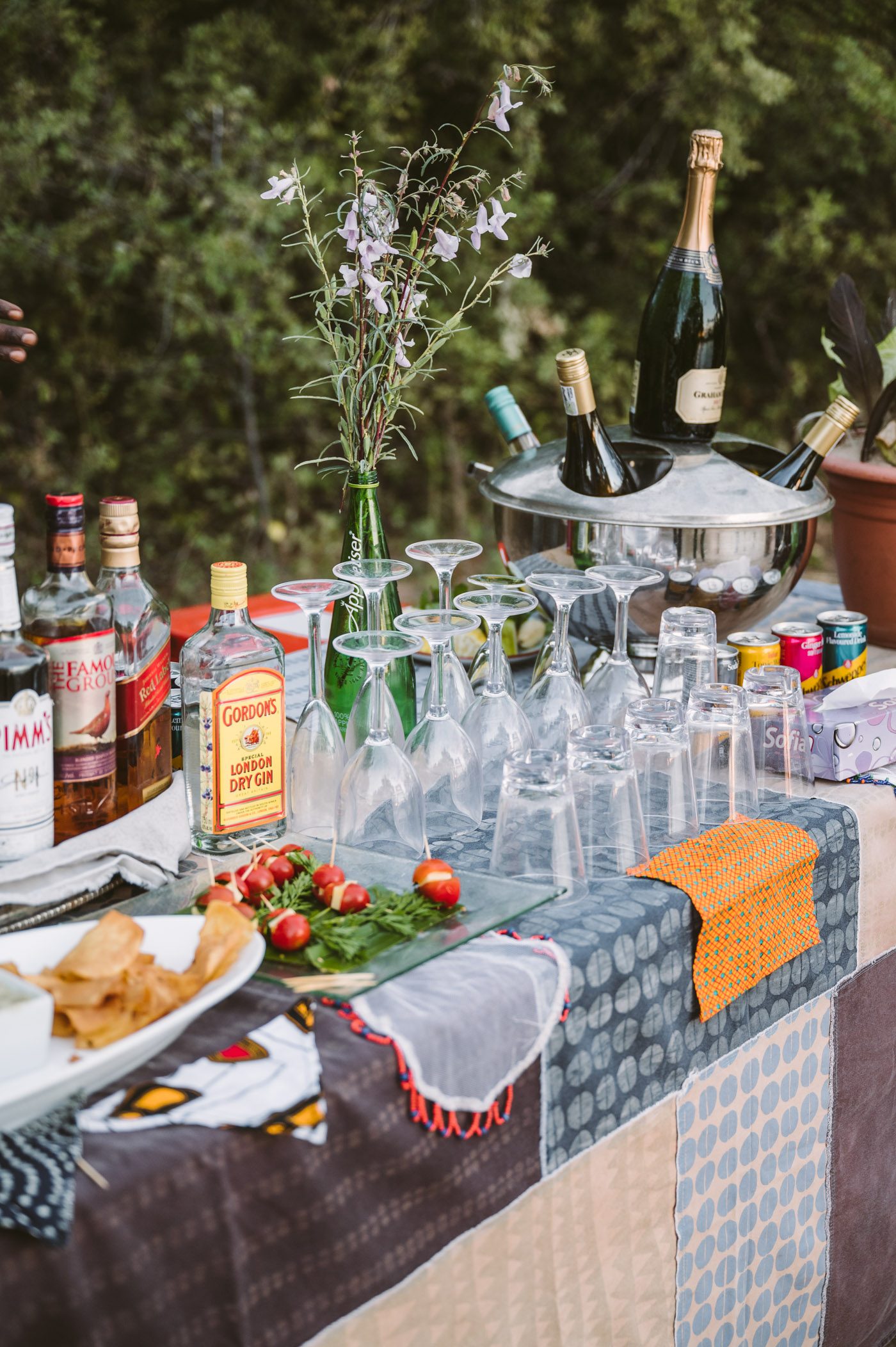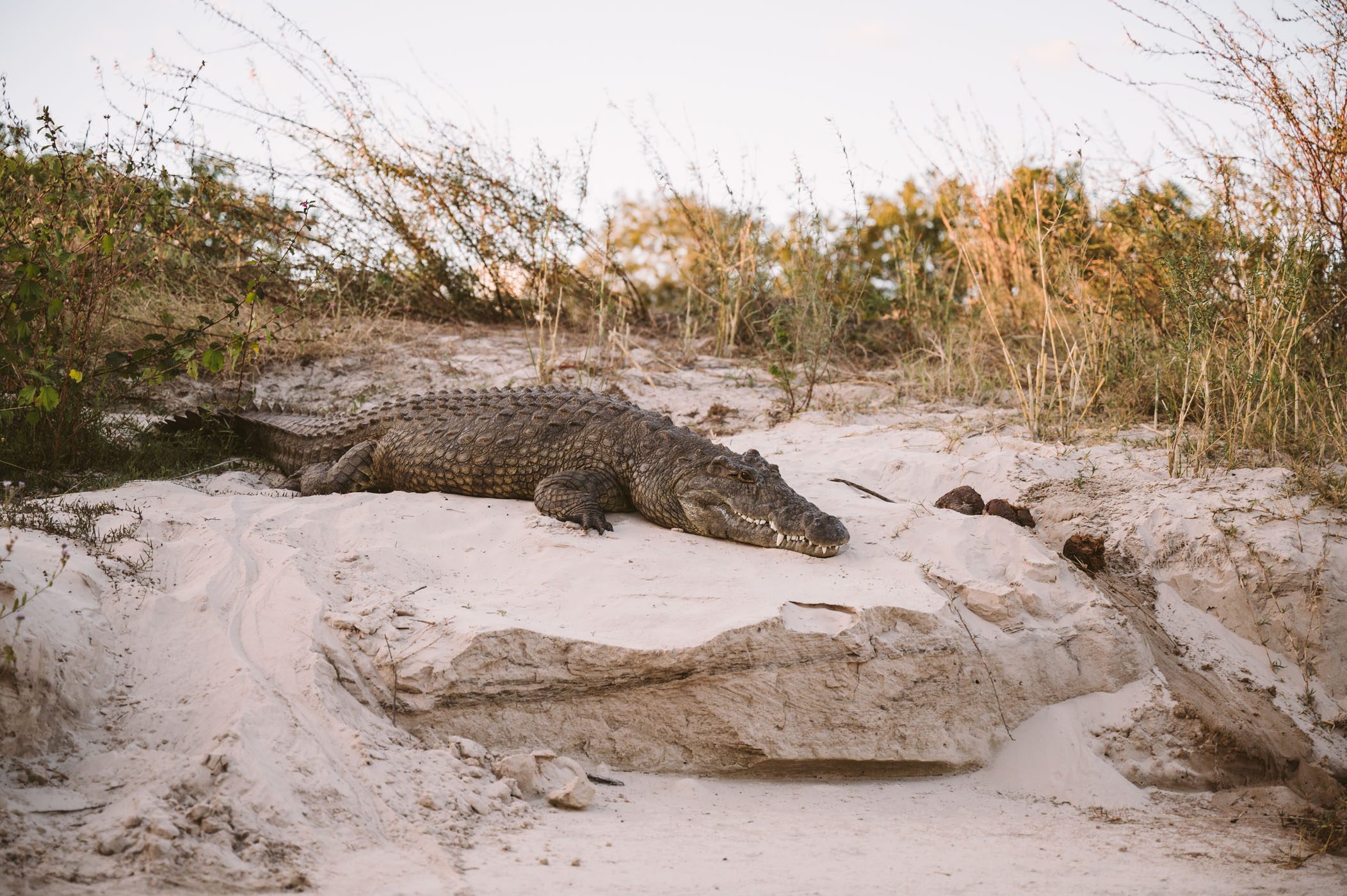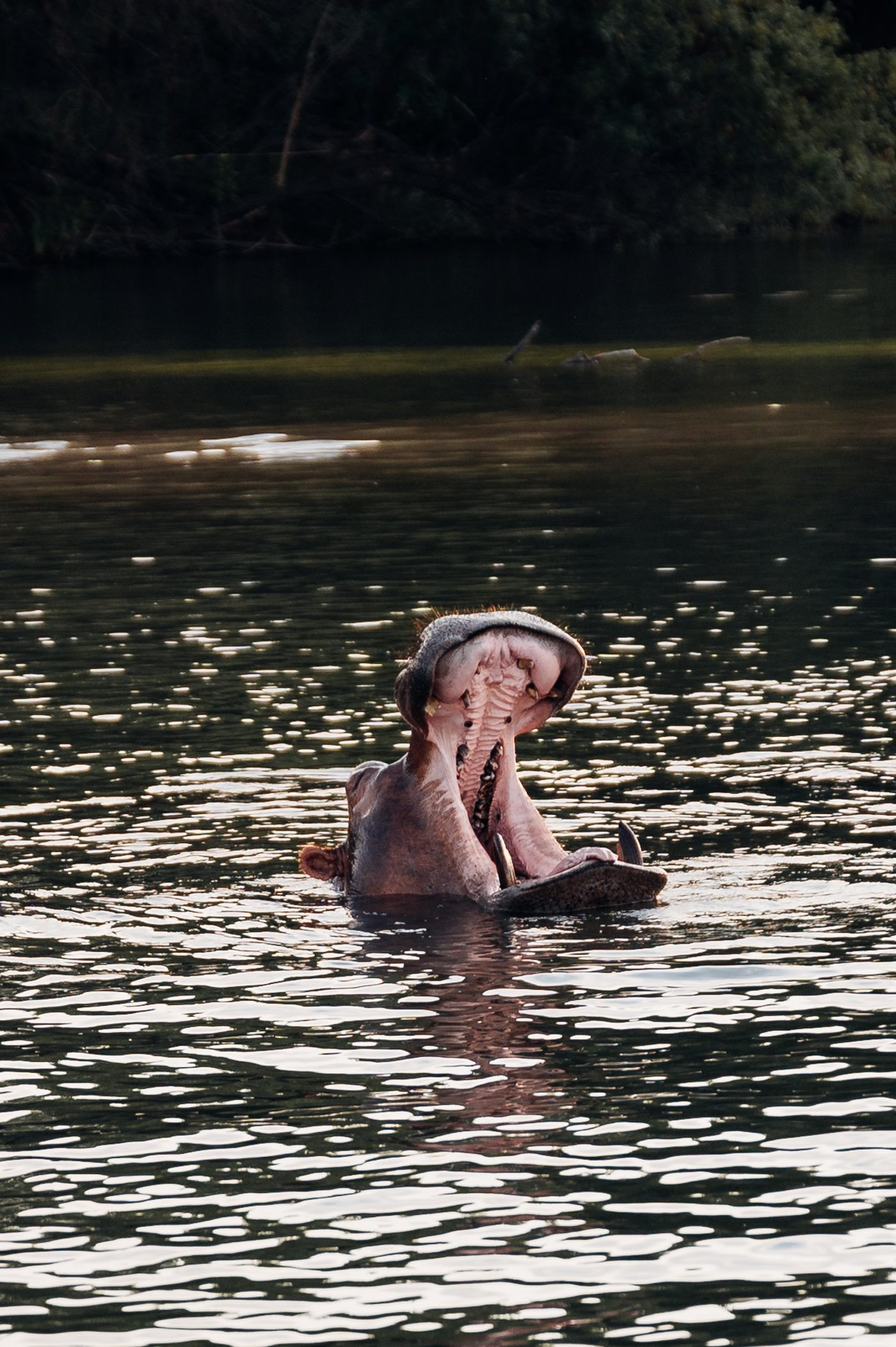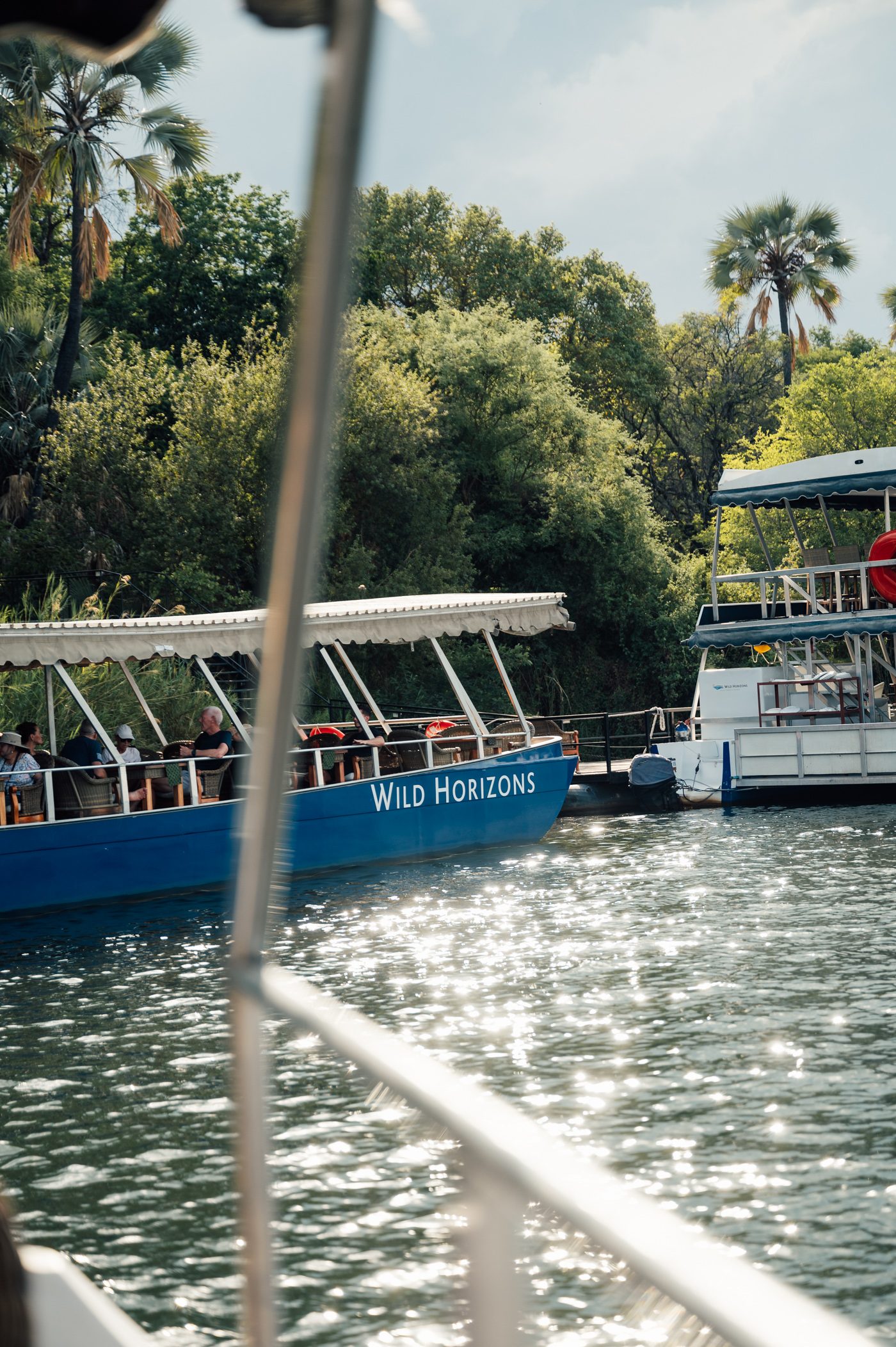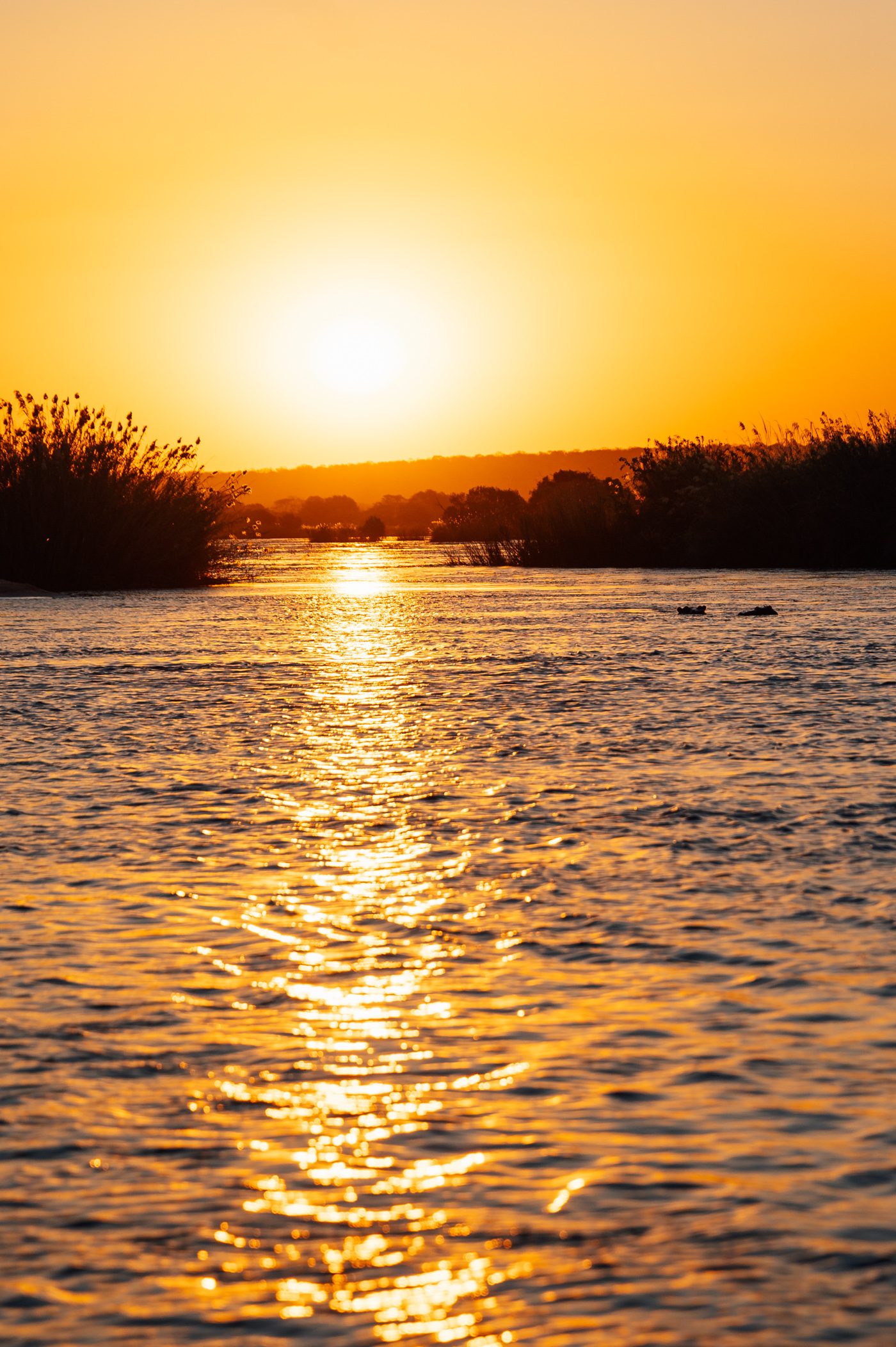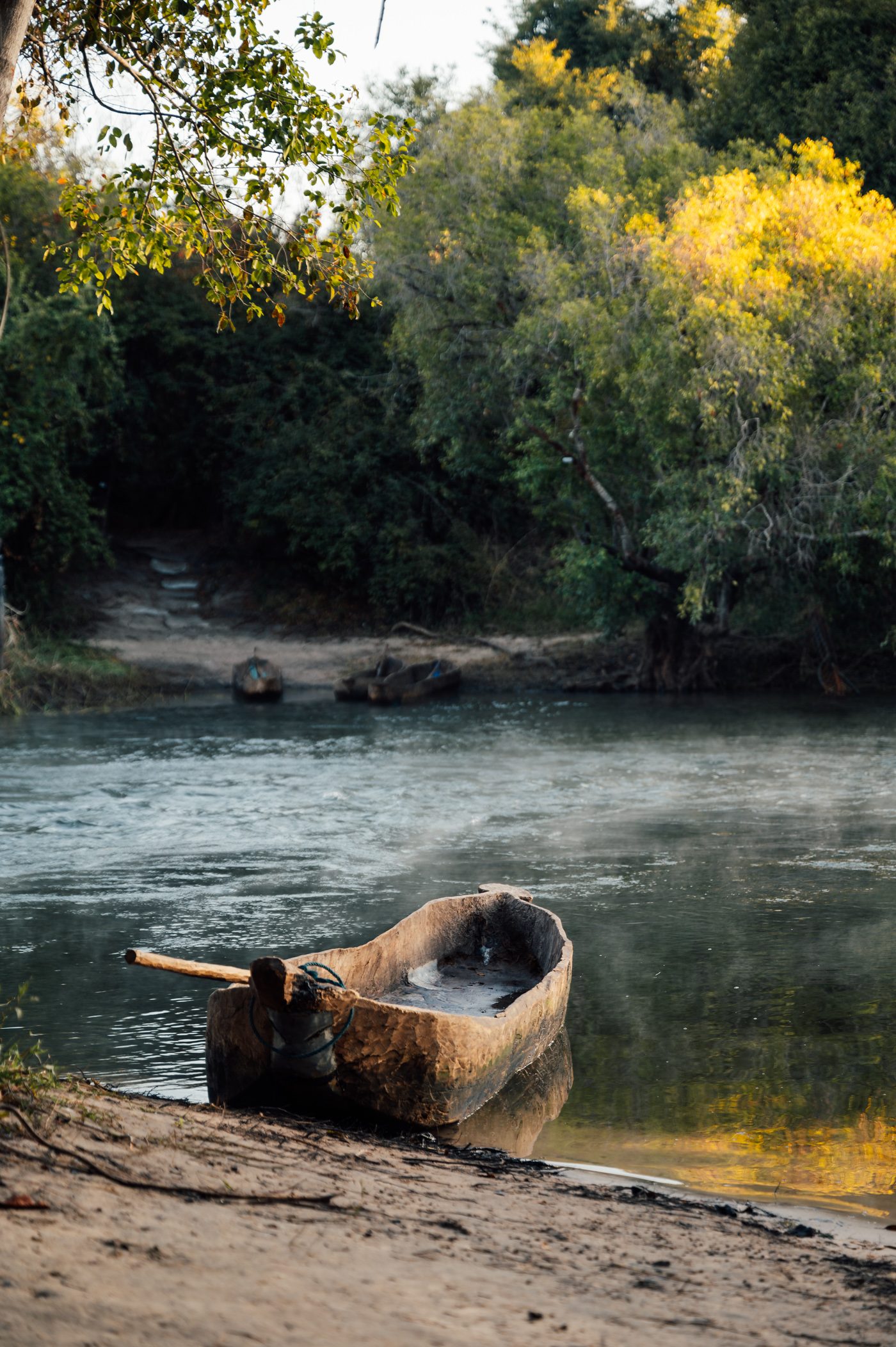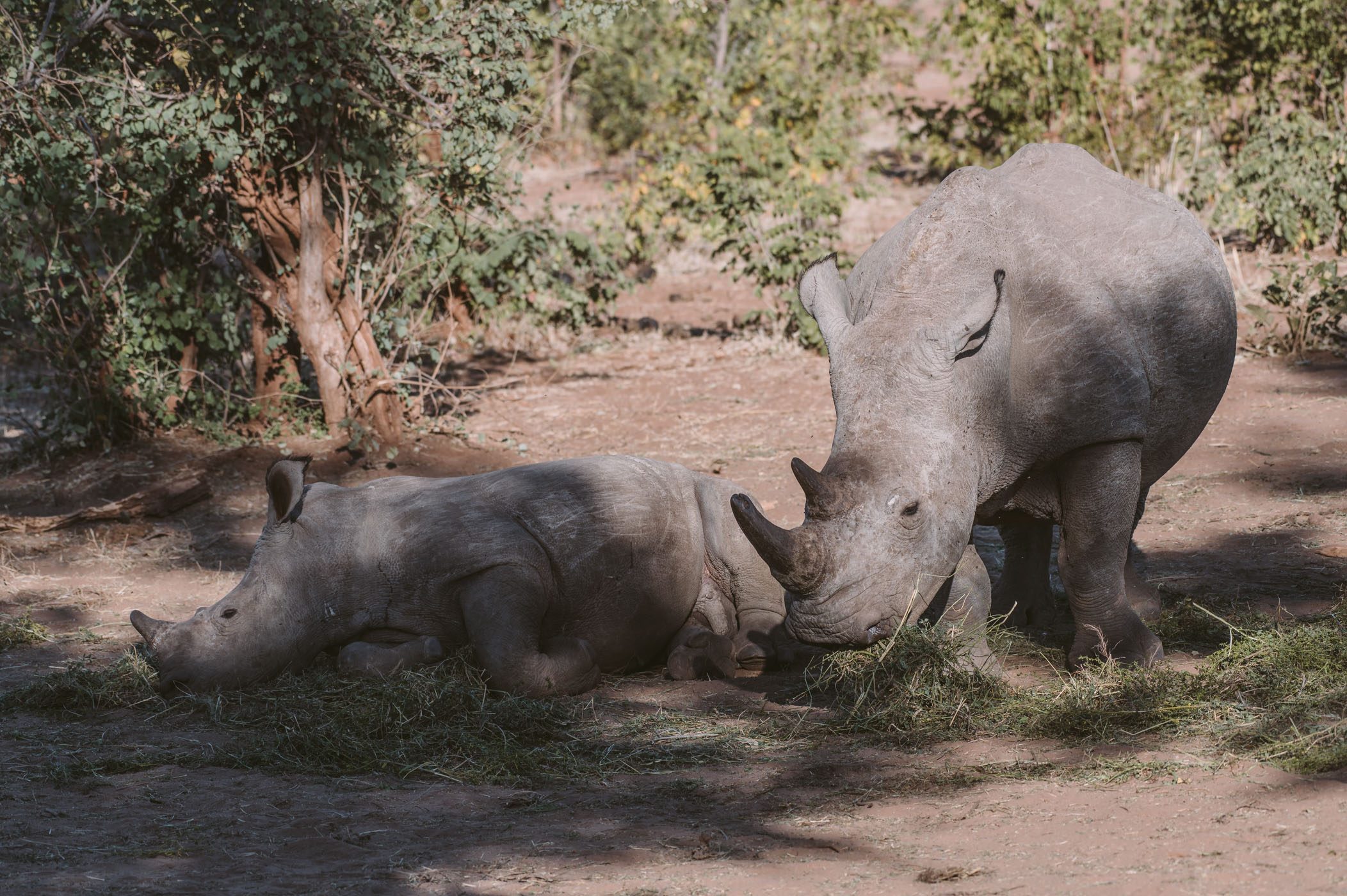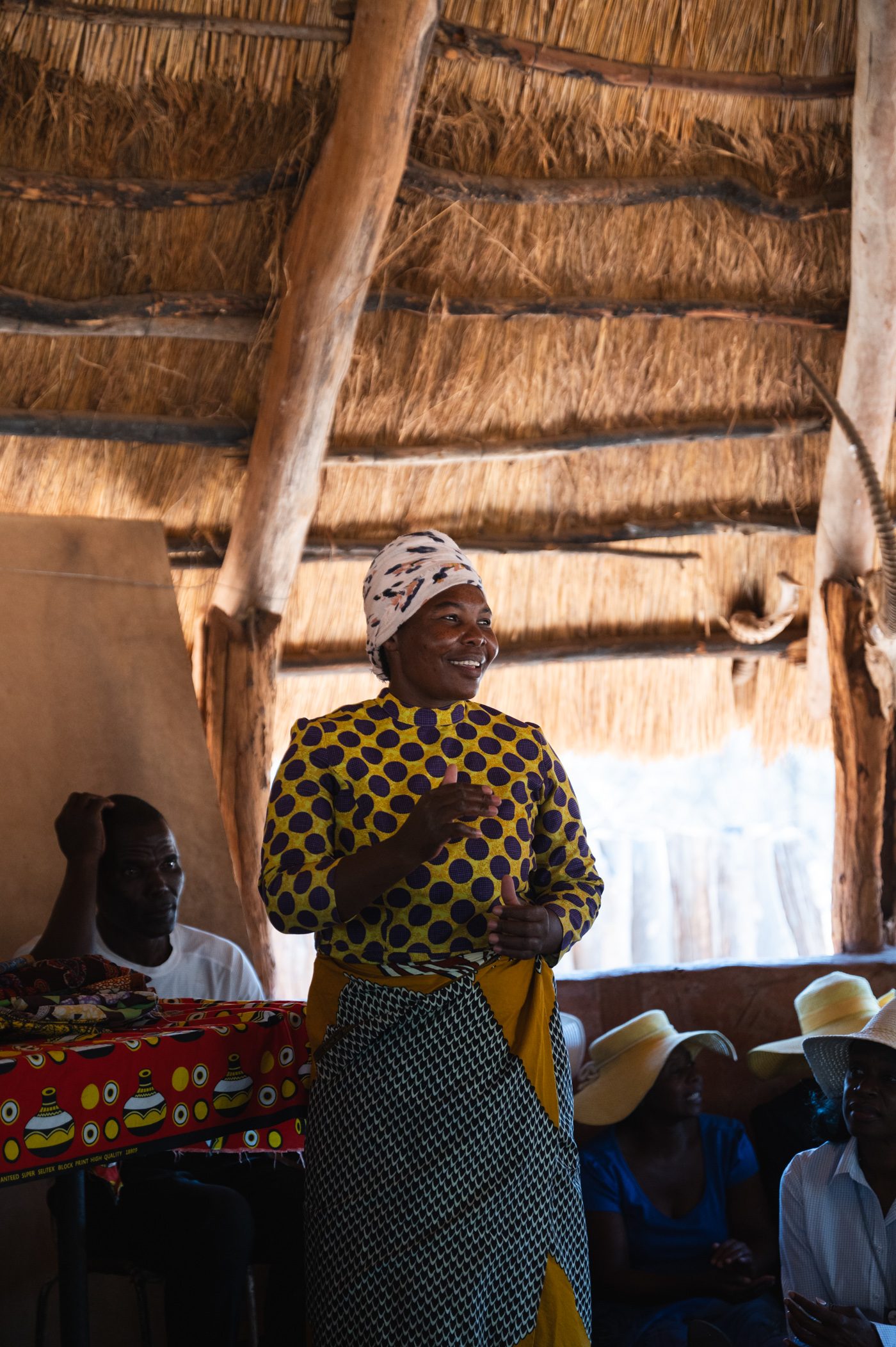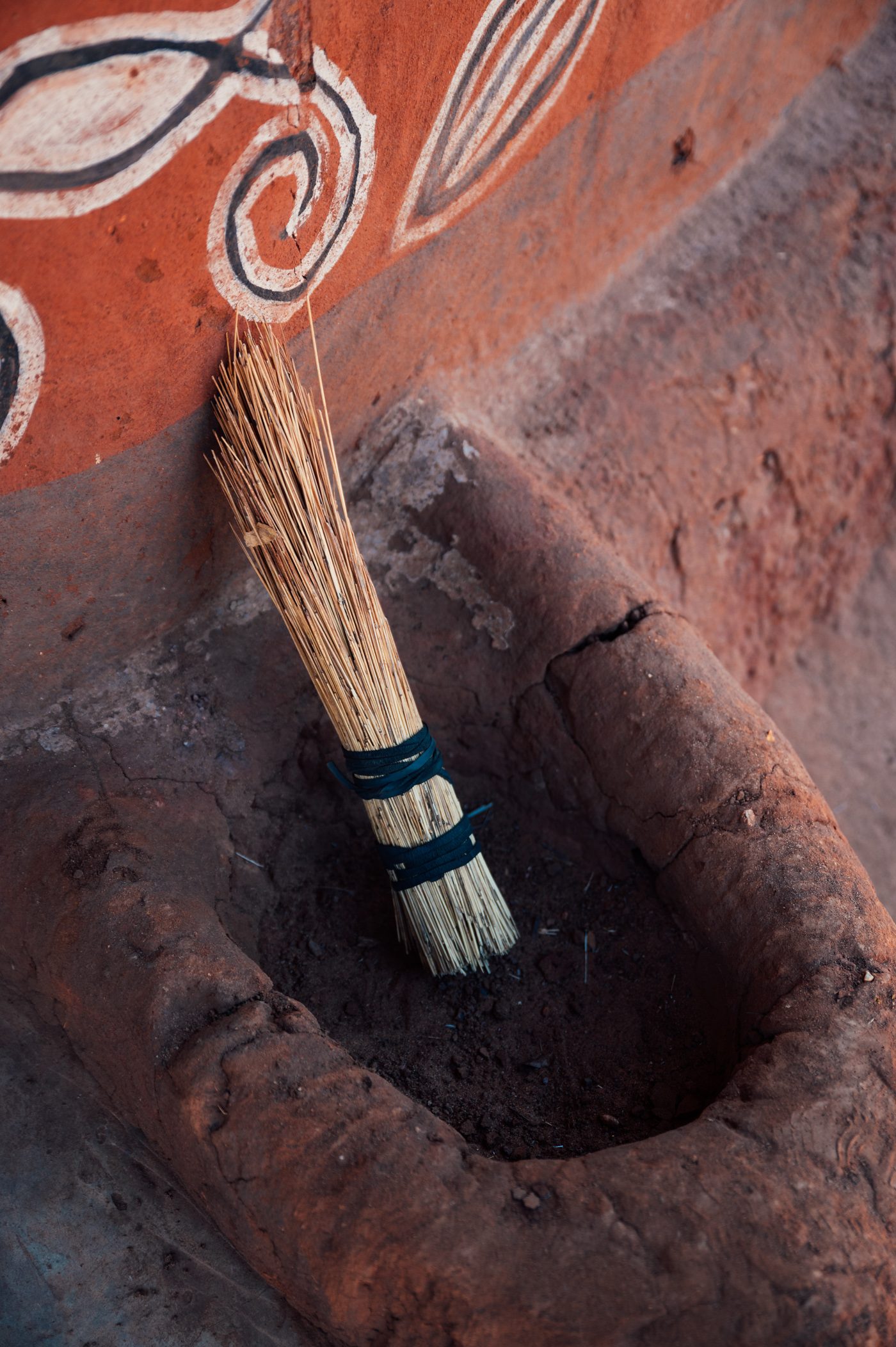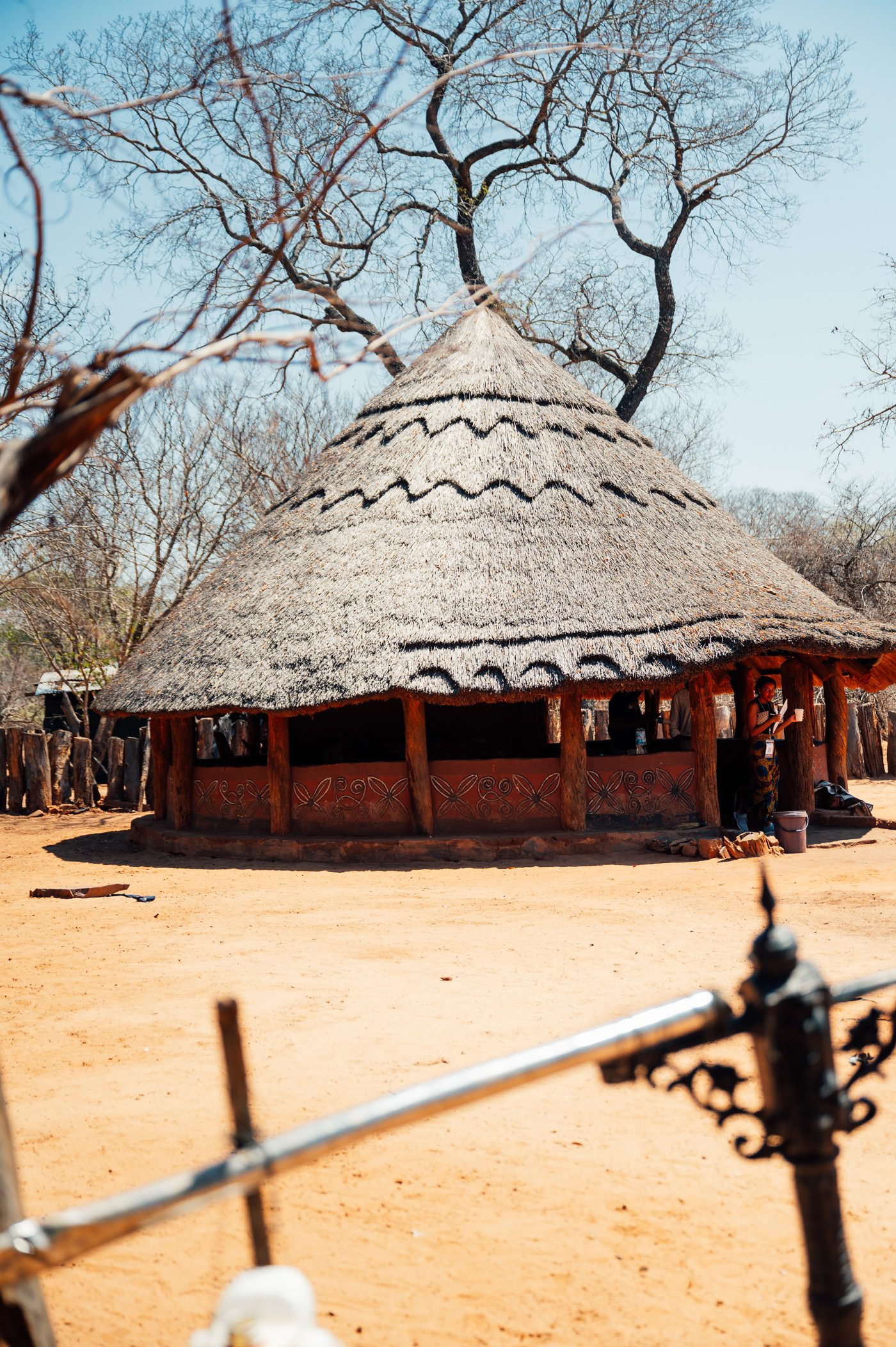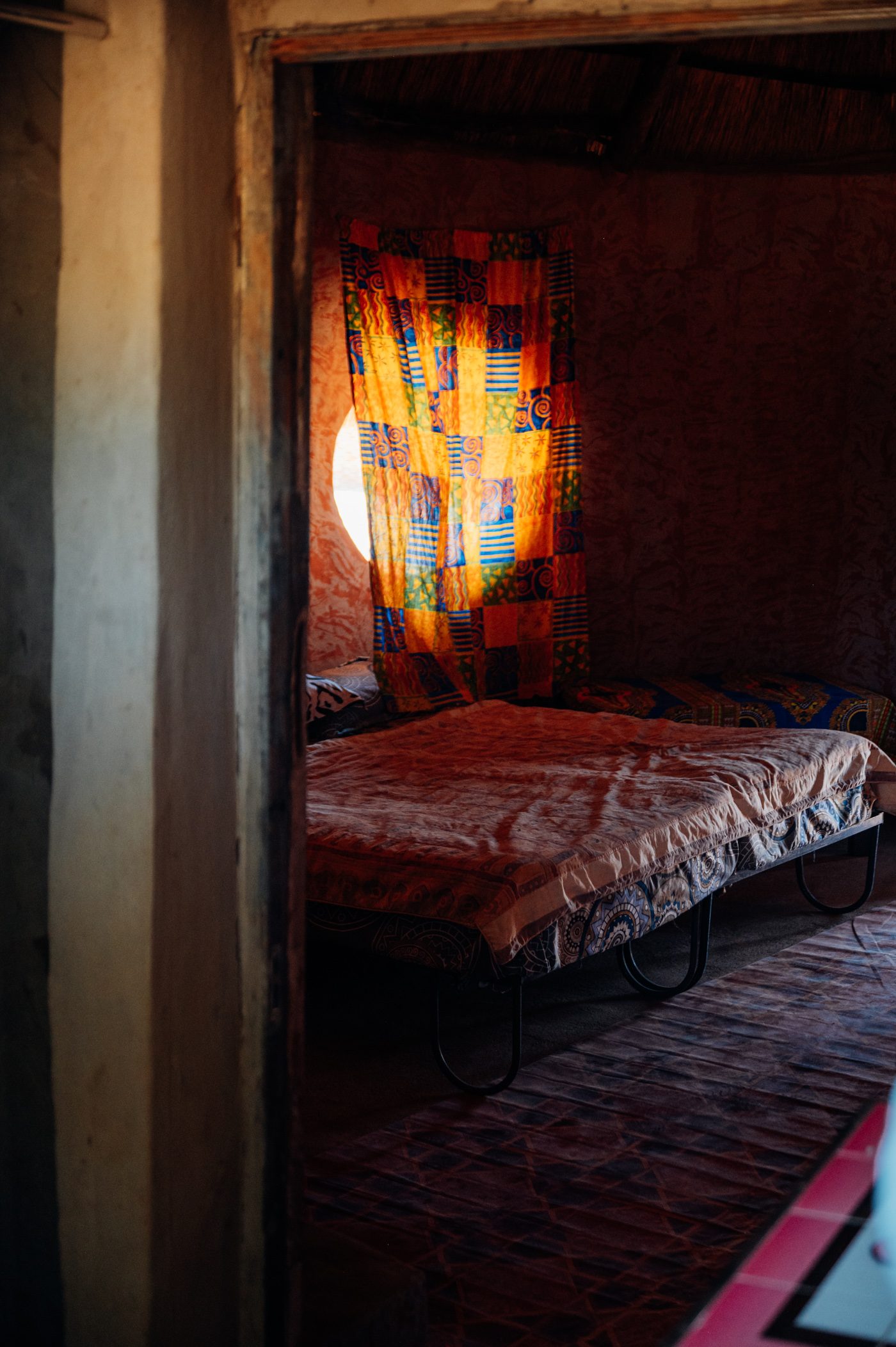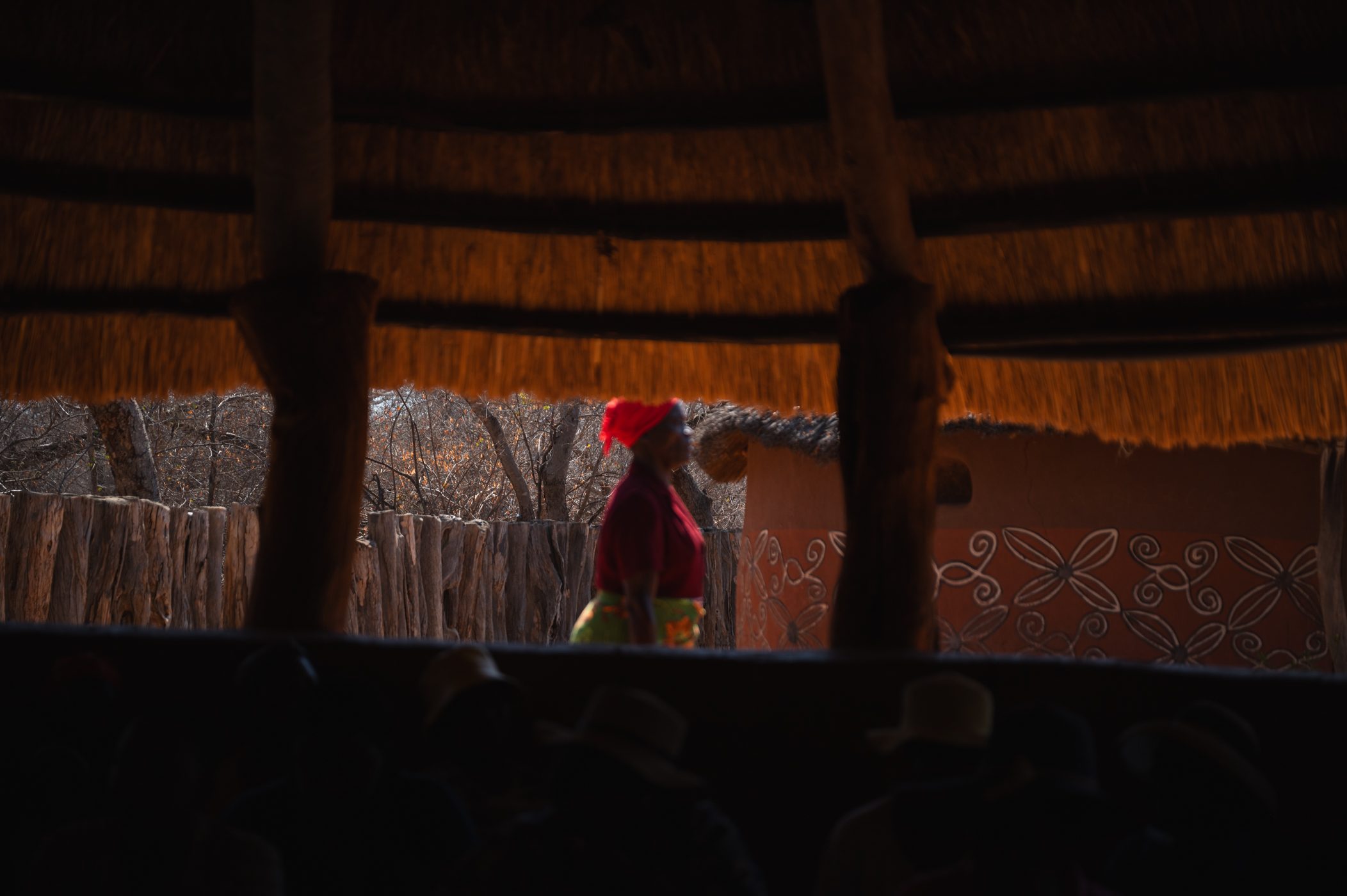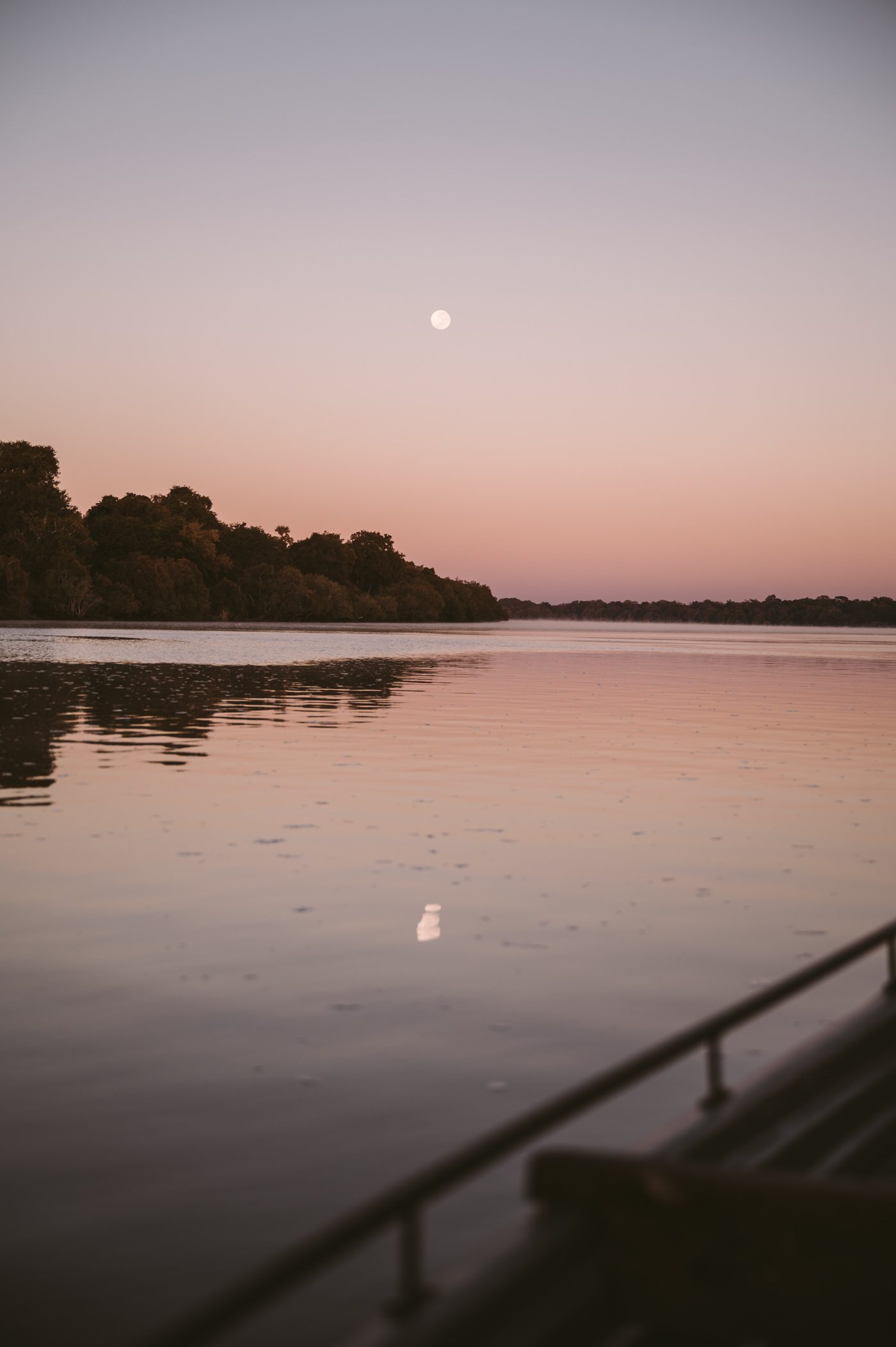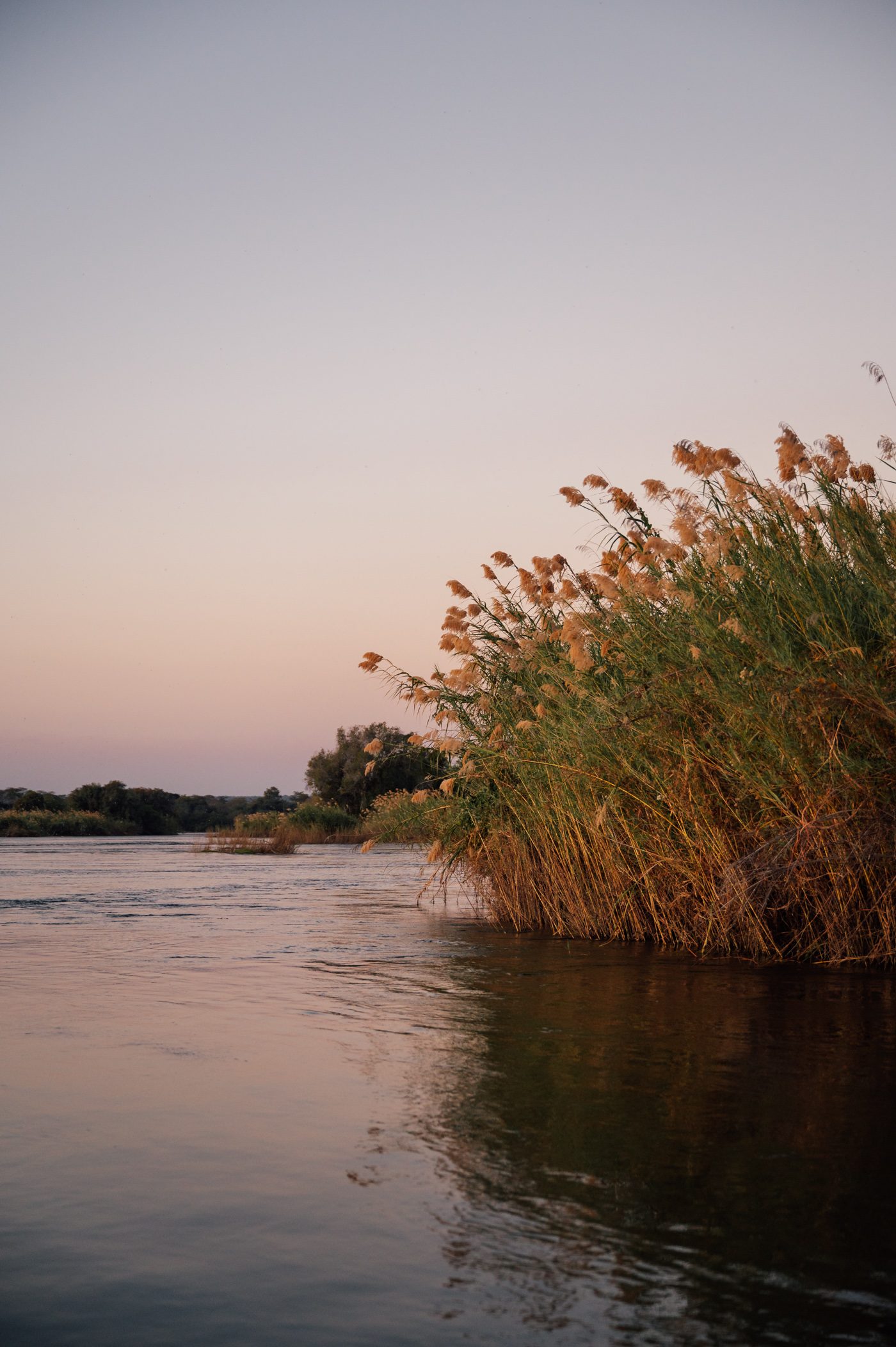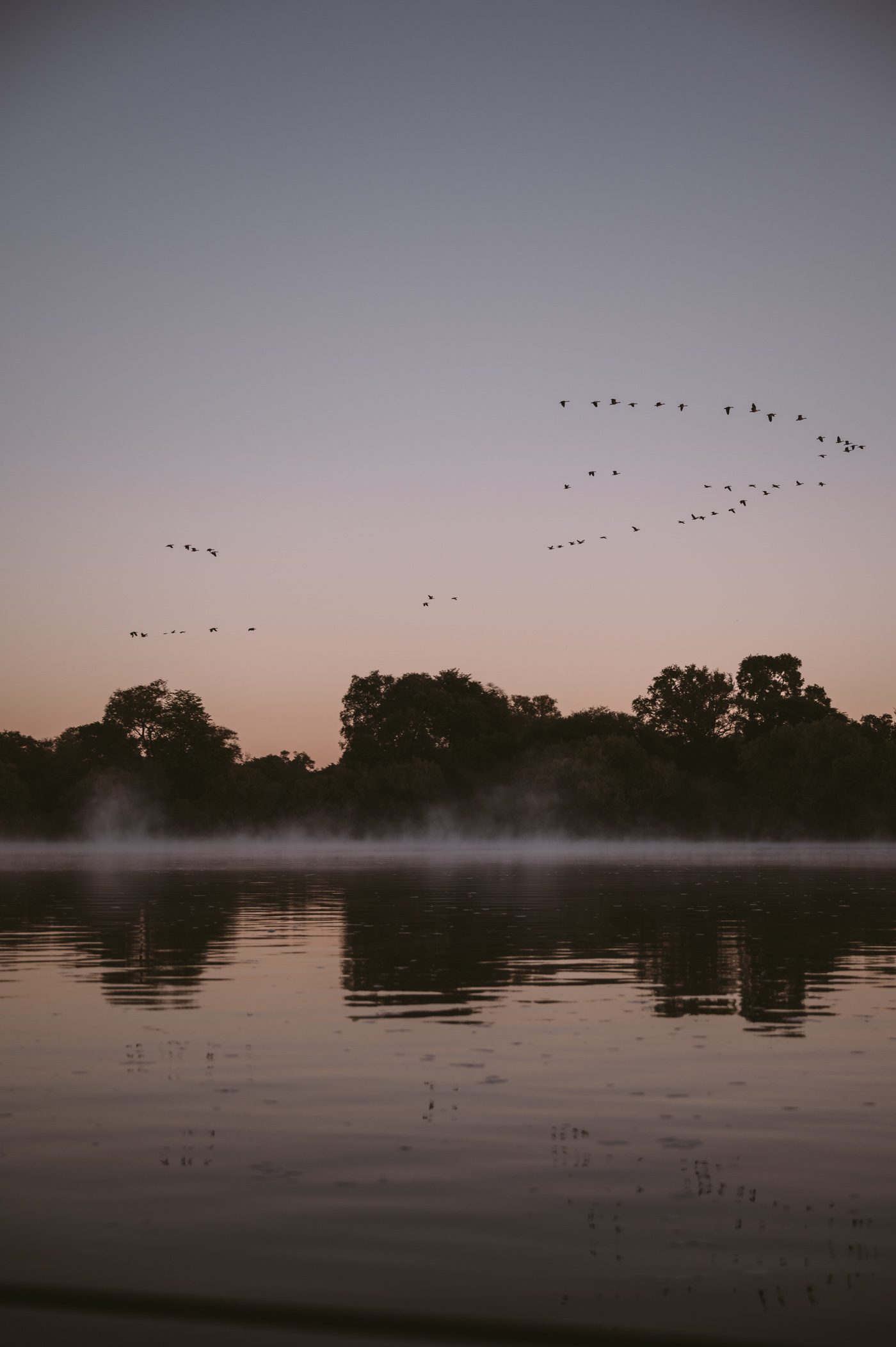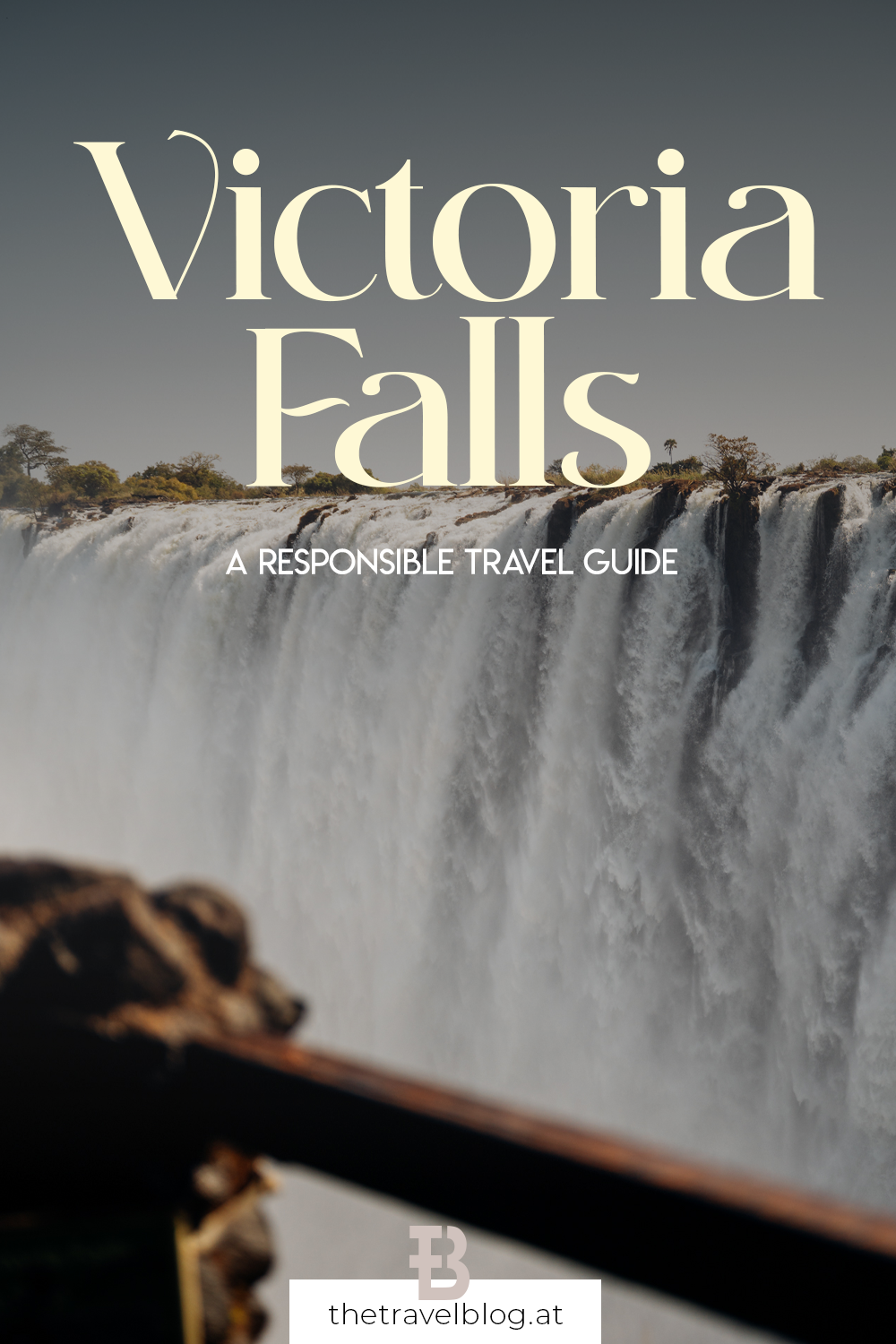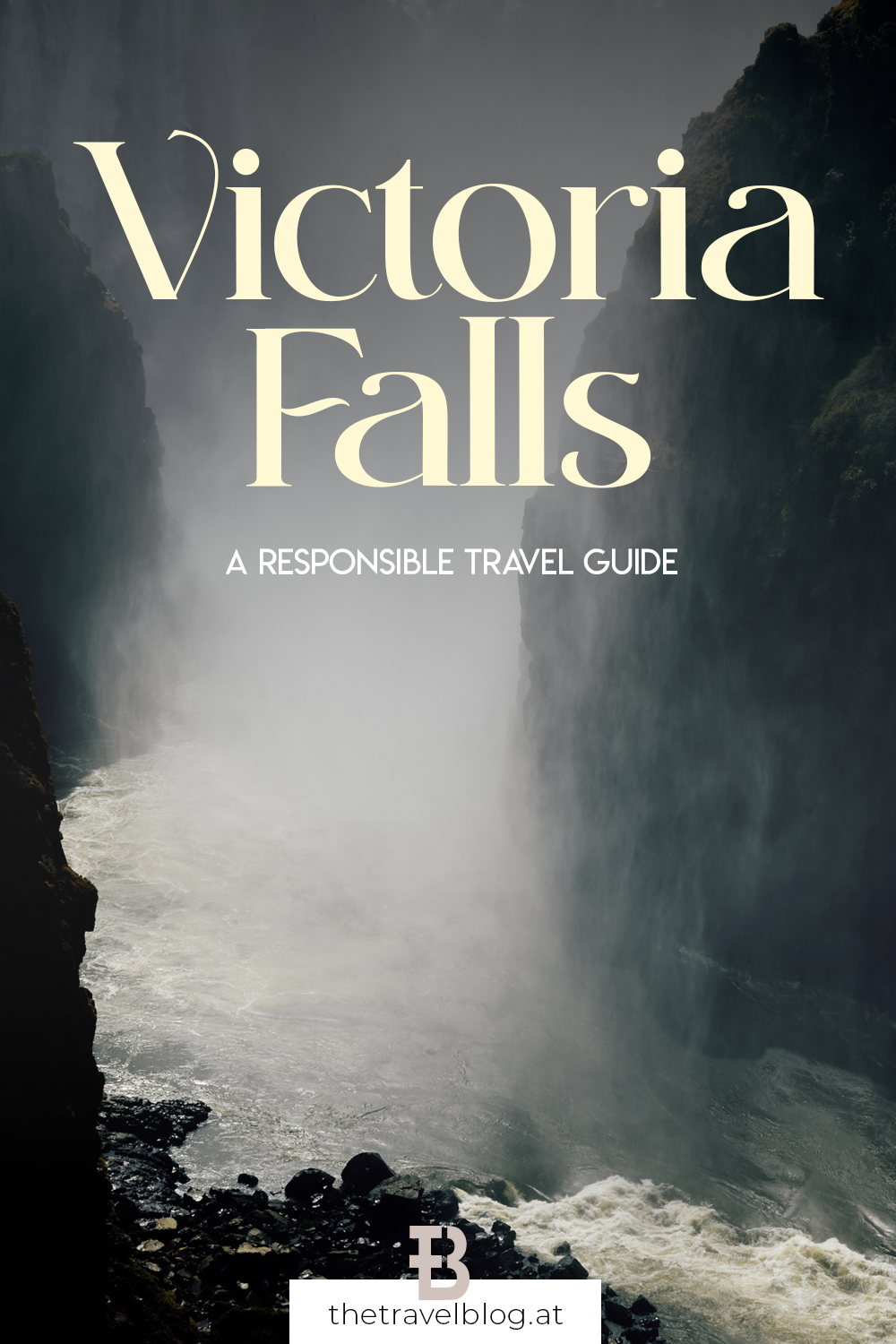As we stood at the edge of Victoria Falls for the first time, mesmerized by its sheer magnificence, we couldn’t help but draw comparisons to another iconic waterfall halfway across the world – Niagara Falls. While Niagara Falls is undeniably impressive with its thunderous roar and bustling tourist attractions, Victoria Falls offers a quieter, more intimate encounter.
Unlike the bustling crowds and long lines at Niagara Falls, Victoria Falls exuded a serene tranquility that seemed almost surreal. The absence of throngs of tourists allowed for a more immersive experience. Despite being one of the Seven Natural Wonders of the World, Victoria Falls remains blissfully less visited compared to its North American counterpart.
And yet, there’s many pitfalls when it comes to visiting Victoria Falls.
During our three separate visits we learned a lot about what to consider and how to get the best experience, while also acting in an ethical and conscious way. In this post we’ll share our personal tips how to make the best of your Victoria Falls visit as a responsible traveller.
Covering the basics: When to go, where to stay, what to do
Before we delve deeper into the ethical practices of a Victoria Falls visit, let’s cover some of the basics, as this will largely determinate the quality of your experience during a visit of Victoria Falls.
Seasonality: Best time to visit Victoria Falls
The experience of visiting Victoria Falls can vary greatly depending on the time of year. Personally we’ve seen the Victoria Falls in June, July and November in different years and there truly is quite a difference, not just in temperatures, but most importantly in water levels.
During the dry season (from June to December) the water levels gradually recede. November usually sees the lowest water levels, revealing more of the underlying rock formations and allowing for clearer views of the falls, but also drying up the Zambian side of the falls. This is an ideal time for activities like white-water rafting when the water flow is less intense. This is also the only time when Devil’s Pool is open and you can take a dip at the edge of the falls.
Conversely, the rainy season (from January to May) brings a dramatic increase in water flow, transforming Victoria Falls into a thundering torrent of water. While the mist may obstruct some views, the sheer volume of water creates a mesmerizing spectacle that is not to be missed. This time of year is perfect for experiencing the falls at their most powerful and vibrant, with lush vegetation surrounding the area in full bloom.
Month by Month guide for when to visit Victoria Falls
- January: Water might return to the Zambian side of the falls, Zimbabwean side still carries more water. Bathing in Devil’s Pools might still be possible at beginning/middle of the month.
- February: Water levels rising, both sides of falls should carry water by now. Bathing in Devil’s Pools suspended by now.
- March, April, May: High water levels at both sides of the falls. Ideal for scenic flights to witness the huge spray of the falls. No bathing in Devil’s Pools.
- June, July, August: Water levels slowly receding. Devil’s Pools might start to open by Mid August/beginning of September. Nights are nice and cold.
- September, October, November, December: Low water levels. Best to visit from Zimbabwean side as Zambian side might dry up. Best time for bathing in Devil’s Pool.
How long to stay at Victoria Falls
The ideal duration to fully appreciate the wonders of Victoria Falls largely depends on individual preferences and the desired depth of exploration. For a comprehensive experience encompassing both the Zimbabwean and Zambian sides, we would recommend a minimum stay of two to three nights.
This allows ample opportunity to explore the various viewpoints, embark on romantic activities such as sunset boat rides and island picnics as well as time to enjoy some of the wildlife around the falls. Or if you’re up for adrenaline-pumping activities such as bungee jumping or white-water rafting, you’ll also have enough chance for that!
Which side is best: Zambian or Zimbabwean side of Victoria Falls?
There’s really no right or wrong here, so we suggest combining visits to both the Zambian and Zimbabwean sides for the most comprehensive experience. There’s just a few things to know:
- Entrance fee: You have to pay entrance fee separately on both sides to enter the falls (there are day trips that you can book where both sides are included, however you still have to pay both entrance fees):
- Entrance fee in Zimbabwe: 50 USD per person (single entry)
- Entrance fee in Zambia: 20 USD per person (single entry)
- Passport: You need your passport to cross Victoria Falls Bridge between Zambia and Zimbabwe. If you plan to visit only the bridge and not cross into the other country you should still bring your passport, but you don’t need a visa as the bridge itself is considered No-Man’s Land.
- Visa requirements: If you do plan to visit both sides make sure to get a multi-entry visa if you plan to go back and forth during a day trip. Another option is to get a KAZA univisa at your first point of entry, which allows to travel freely between Zambia and Zimbabwe for a period of 30 days (costs 50 USD).
We have seen both sides and they are equally impressive, but also quite different. While the Zimbabwean side offers great viewpoints of the length of the canyon and the main falls, you can fully immerse yourself in the spray of the falls on the Zambian side.
- Zambian side:
- Wet, wet, wet (in the rainy season).
- Here you can walk several bridges, that are engulfed in the spray of the falls.
- Before you enter the final stretch of the falls walk you should definitely rent rain ponchos and pack your camera (or hold it under the poncho).
- Wear clothes that dry quickly and shoes that can get wet.
- In the dry season the Zambian side can dry up.
- Zimbabwean side:
- 80% of Victoria Falls are located on the Zimbabwean side.
- No need for umbrellas or rain ponchos here.
- It’s a more casual walk with a few stunning viewpoints.
We suggest to start your journey on the Zambian side, where you can immerse yourself in the thundering majesty of the falls up close, traversing the Knife-Edge Bridge and indulging in exhilarating activities like helicopter flights for bird’s-eye views. After soaking in the awe-inspiring sights and sounds, cross over to the Zimbabwean side for a more panoramic perspective, where the falls reveal themselves gradually amidst lush rainforest surroundings.
Where to stay: Zambian or Zimbabwean side of Victoria Falls?
When it comes to choosing where to stay there’s also a few things to know. I’ve stayed on both sides of the falls in four different lodges and hotels with very different experiences.
- Zambian side: Many boutique-sized, owner-run riverside lodges. Romantic boat experiences, island picnics, riverside dinners. Most of these lodges are located a bit outside of Livingstone town, so to get to Victoria Falls you need transportation. Livingstone town itself isn’t a great place to stay.
- Zimbabwean side: Victoria Falls town is a traditional resort town, very touristy and lots of hotels are located directly in town in walking distance of the falls. Here you can stay in one of the historic hotels with traditional high tea in the afternoon and feel like you’re transported back to colonial times. It’s less serene and romantic, but more historic.
Here’s where we’ve stayed so far:
- Tongabezi Lodge by Green Safaris, Zambia: Ultimate luxury experience, with only 10 houses and cottages located 12 kilometres upstream of Victoria Falls. Beautifully furnished rooms with private decks. If you’re opting for an even more luxurious experience consider staying at sister property Sindabezi Island Camp, which has just 5 rooms and is located on a private island on the Zambezi river.
- Chundukwa River Lodge, Zambia: This owner-run, eco-conscious boutique lodge is nestled alongside the Zambezi River 25 kilometres from Victoria Falls and also has its own horse ranch. Owners Doug & Gail are a lovely couple with a strong conservation ethos (plus their food is outstanding!).
- Tintswalo at Siankaba, Zambia: 7 tree house river tents, built on stilts on a private island adjacent to the Siankaba community and about 30 kilometres from Victoria Falls.
- The Victoria Falls Hotel, Zimbabwe: Built in 1904, The Victoria Falls Hotel is an Edwardian-style hotel and said to be Zimbabwe’s grandest and oldest luxury hotel. The 149 rooms are spread out in different buildings on the large grounds, offering views of ‘The Smoke that Thunders’ as well as a very traditional high tea service in the afternoon on the terrace.
What to do: On both sides of Victoria Falls
Where you want to stay also depends largely on the activities you want to pursue during your time at Victoria Falls. We strongly believe the visit of the falls shouldn’t be the only activity you plan–there’s so many exciting things to experience during your stay. Here are a few options and tips to include in your itinerary:
- Zambia side
- Game drive in Mosi-oa-Tunya National Park
- Walking safari to visit the white rhinos in Mosi-oa-Tunya National Park
- Livingstone town visit with shopping at Mukuni park curio market and a visit to Livingstone Museum
- The famous swim at the edge of the falls at Devil’s Pool (only during low-water season)
- Visiting Livingstone Island (also depending on water levels)
- Microlight & Helicopter flights
- Zimbabwe side
- Shopping at Sinathakawu Curio Market and Elephant’s Walk:
- Batoka Creatives (handmade jewellery from a self-empowerment group based in the rural areas of Victoria Falls)
- Mopane Snare Wire (recycled snare wire jewellery products)
- Visit Tami Walker Fine Art Gallery for some exquisite wildlife photography and souvenir shopping
- Enjoy High Tea in the afternoon at Stanley’s Terrace at The Victoria Falls Hotel
- Have lunch at “The Lookout Cafe” – Wild Horizon with views of the gorge
- Enjoy freshly baked donuts and snacks at Simba’s Artisan Bakery
- Get some adrenaline going on the Gorge Swing & Zipline at Victoria Falls (by Wild Horizons)
- Take a guided tour of a rural village (Umuzi Homestead tours)
- Victoria Falls Steam Train dinner & bridge run
- Shopping at Sinathakawu Curio Market and Elephant’s Walk:
- Both sides
- Full moon visits of Victoria Falls to witness the magic of a lunar rainbow
- Boat tours on the Zambezi river
Ethical travel guide for your Victoria Falls visit
What to do: Ethical wildlife encounters in Victoria Falls
One thing we wouldn’t recommend are animal encounter activities like crocodile cage diving or walking with cheetahs. Both are unethical activities that endanger wildlife. If you’re interested in wildlife encounters there are a few ways for ethical activities around Victoria Falls.
Animal encounters to avoid:
- Any activity that includes unnatural direct interaction with wildlife.
- No go’s are: Touching, feeding, petting cubs, riding (they are wild animals and not domesticated!), bathing, walking on chains or alongside wild animals like cheetahs, diving with animals in enclosures, posing for photos with sedated animals, etc.
- It generally makes no difference if it’s a “sanctuary” or a zoo: Often enough unethical providers pose as sanctuaries. The so called “orphans” or “rescued” animals are “habituated” (which often includes brutal training with physical abuse) or even bred just for the tourism experience. They often live in terrible conditions and are “disposed” when they served their purpose.
- Of course exceptions apply, but it’s really hard to judge from outside if a place is truly a proper sanctuary with strict ethical guidelines and rules. And generally speaking: If we as tourists create demand for such offers, this will entice unethical providers to grab the opportunity to make money.
Ethical animal activities in and around Victoria Falls:
- Rhino Walking Safari in Livingstone’s Mosi-Oa-Tunya National Park: Since a successful reintroduction in 1996 white rhinos call Mosi-Oa-Tunya National Park their home. The park is close to Livingstone in fairly easy to visit. On a rhino walk you’ll be accompanied by armed rangers and there’s a strict limit how many people can visit the rhinos and also how long you’re allowed to stay. Another indicator for an ethical experience is that there is no human-wildlife interaction (as in no touching, no feeding, etc.).
- Boat cruises and game drives in National Parks on Zambian and Zimbabwean side: Most Victoria Falls visitors go on a boat cruise during their visit. Here you’ll get to see elephants, crocodiles and hippos from the comfort of a motor boat (or even a dugout canoe if you’re more adventurous). Personally we prefer the small boats that are operated by many of the riverside lodges, but there are also larger commercial vessels if you’re staying at a hotel with no direct river access.
- Day safaris: You can also take day trips to close-by Chobe National Park in Botswana for an extended safari experience with a 100% elephant guarantee (and no touching or feeding).
What to do: Ethical social & community practices
It was only during our third Victoria Falls visit, that we were learning more about the communities that live around the falls. During a guided village visit of a traditional Umuzi homestead we got the chance to learn what life in the rural villages around Victoria Falls entails. While this village is located just a 15 minutes drive away from Victoria Falls, one of the seven natural wonders of the world, many of the villagers have never seen the waterfalls with their own eyes (!). And for tourists it’s usually just the other way around. Most of the visitors come solely to see Mosi-oa-Tunya, but don’t get in touch with local life and communities (unless during staged dinner & drum shows or at curio markets).
So the real question is: How can local communities benefit from the expansion of tourism that is happening? The answer: It’s complicated. It’s up to us as tourists to act in a way that we support the creation of a tourism environment, that also produces economic opportunities for locals, includes them in the decision-making processes and communication and also entices other visitors to go beyond the well trotten bucket list itineraries.
The Umuzi homestead tour is such an experience. Here you’ll get to learn about how to wear the traditional “chitenge” wraparound dress, how to grind and cook millet, how to produce biogas for cooking and much more. You can also stay at one of the traditional mud huts for a night to fully immersive yourself in Zimbabwean rural life.
The challenge is to find these offers, as the villagers don’t have a way to promote this experience directly. These tours can usually only be booked through third party operators or lodges. We would highly recommend booking a village tour if you’re ever planning a visit of Victoria Falls. It’s best to inquire with your tour operator or hotel to book this!
3 tips to plan your responsible Victoria Falls trip
Avoiding unethical tourism practices while traveling requires some conscious decisions and careful planning. Here are three general tips to help steer clear of overly commercialised and unethical experiences:
1. Research Activities & Experiences
Before embarking on your journey to Victoria Falls, take the time to research experiences with a focus on ethical practices. Look for companies, that actively drive change – by operating sustainably, offering direct employment to local communities, engaging in wildlife conservation or making another type of positive impact. Sometimes you just want to hop on that helicopter to see Victoria Falls from above and we totally understand that, but maybe you can enrich your experience by also taking a guided village tour or shopping for locally produced crafts instead of imported souvenirs.
2. Choose Responsible Tour Operators
When booking activities such as boat cruises or wildlife encounters, opt for tour operators that prioritize sustainability, ethical practices, and environmental conservation. Look for certifications or affiliations with reputable organizations such as the Global Sustainable Tourism Council (GSTC) or the World Wildlife Fund (WWF). Responsible tour operators will prioritize the well-being of wildlife, minimize environmental impact, and provide educational experiences that promote conservation efforts. When it comes to animal encounters, prioritize experiences that focus on observing wildlife in their natural habitats rather than engaging in activities that involve direct contact or exploitation of animals for entertainment purposes.
3. Seek Authentic Cultural Experiences
Instead of dining at large, commercial restaurants catering to tourists, seek out authentic culinary experiences at local eateries or family-owned establishments or take a cooking class at a local village. Not only will you enjoy more diverse and culturally rich meals, but you’ll also support the local economy and engage with the community on a more personal level. By following these tips, you can ensure a more meaningful and responsible travel experience while steering clear of mass tourism and unethical practices. Remember to prioritize sustainability, cultural authenticity, and respect for the natural world in all your travel endeavors.

